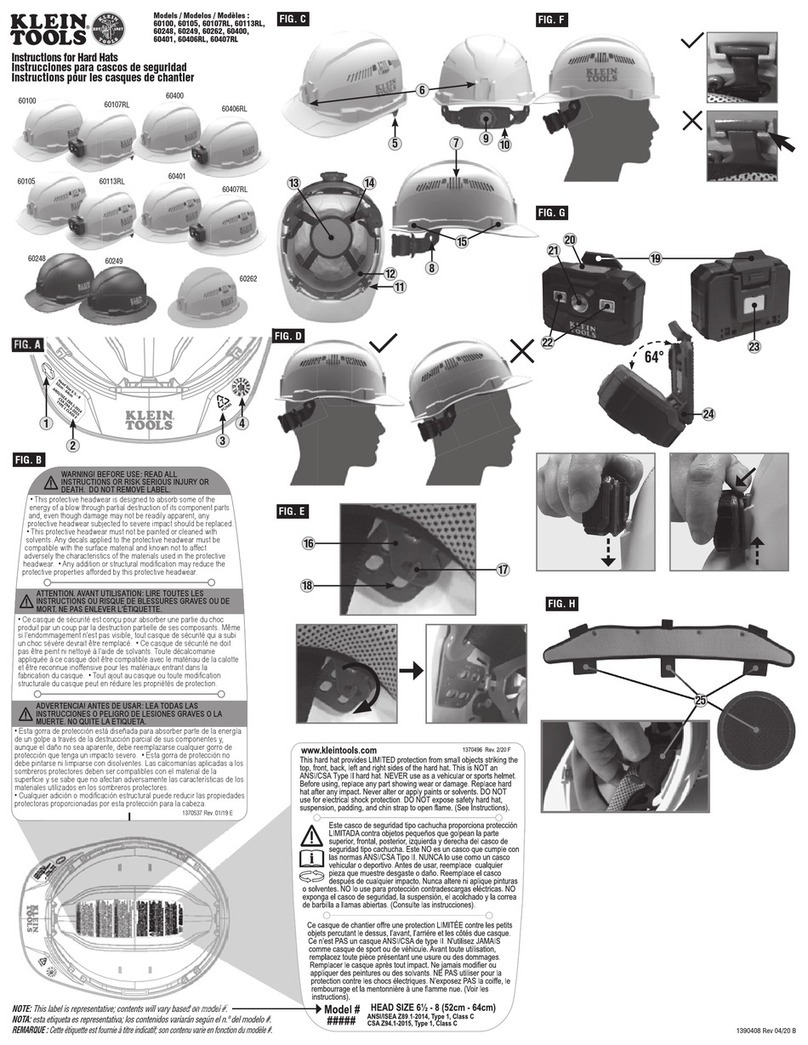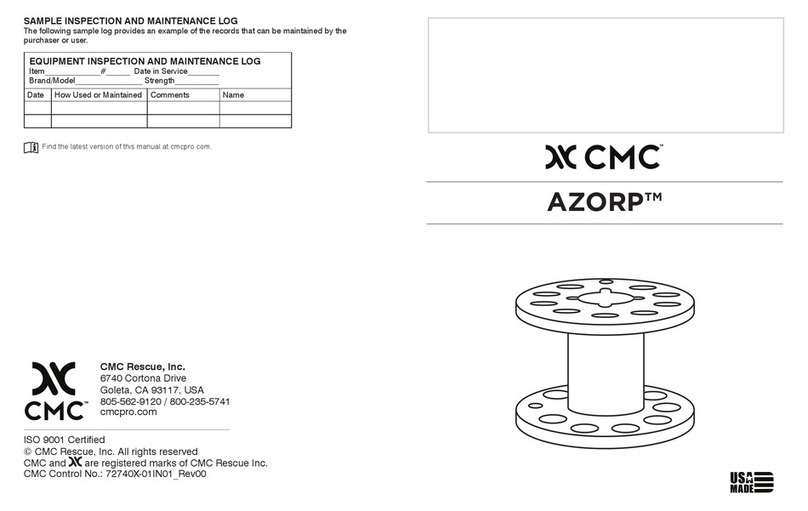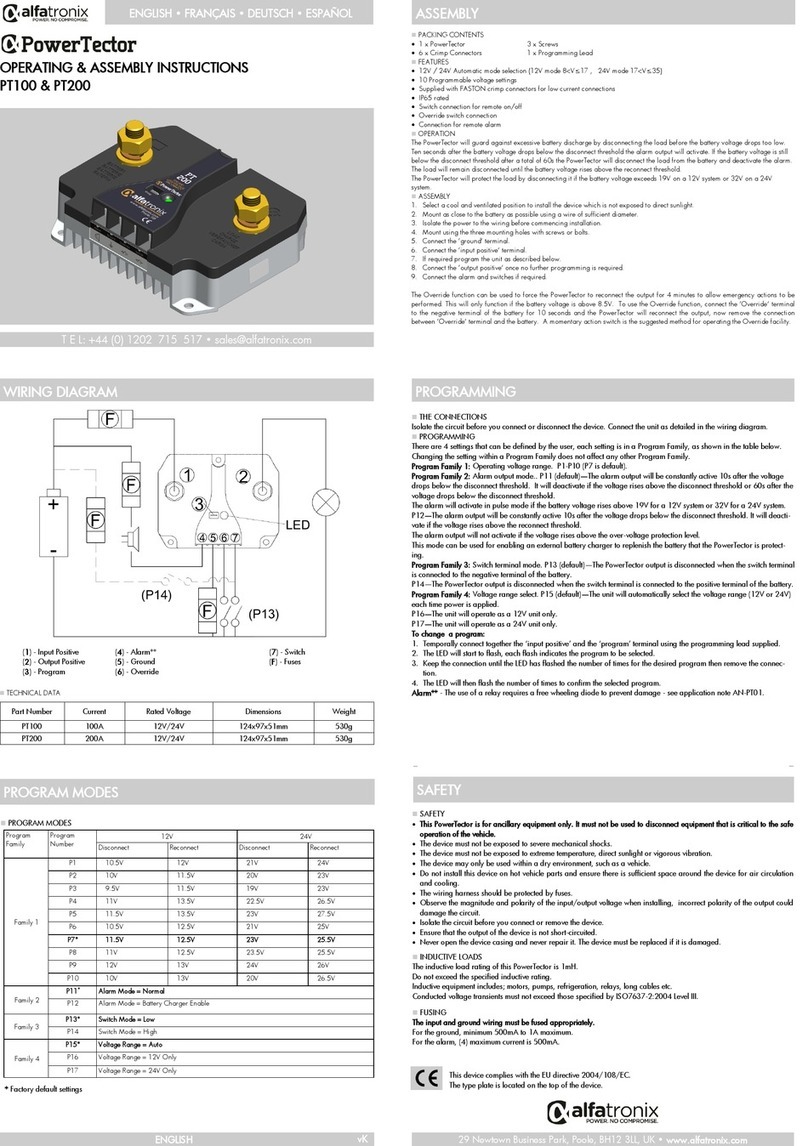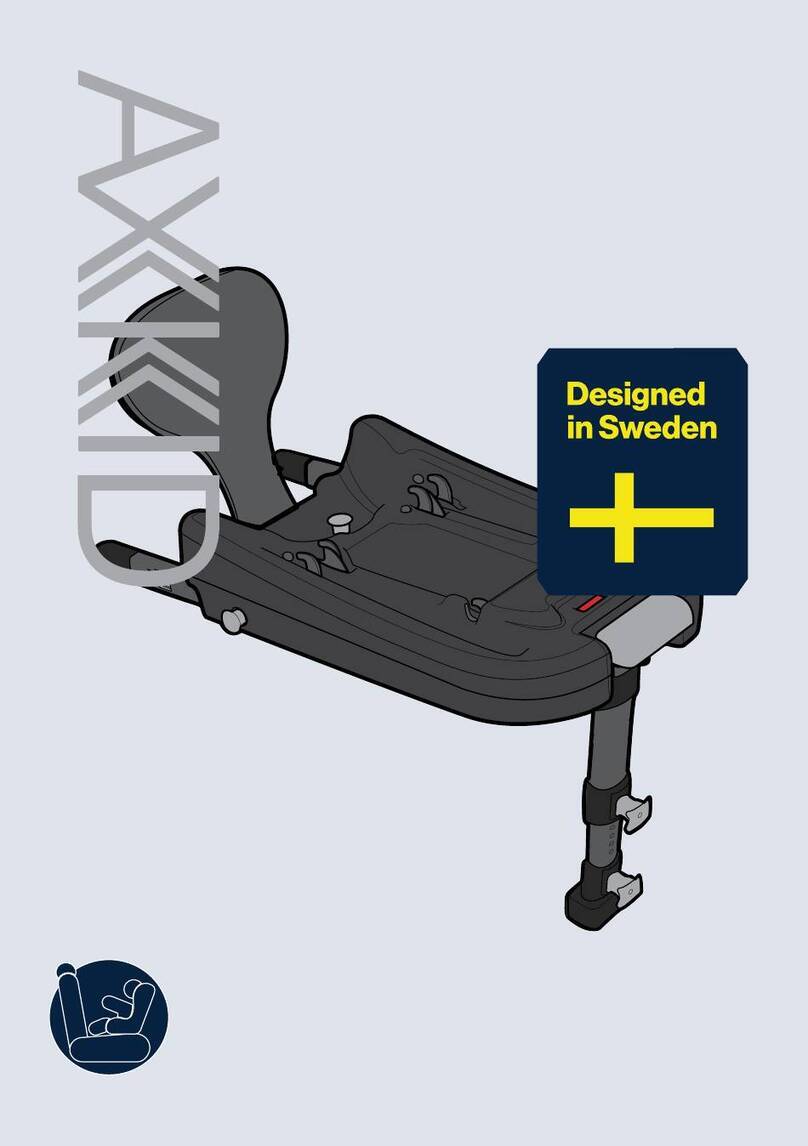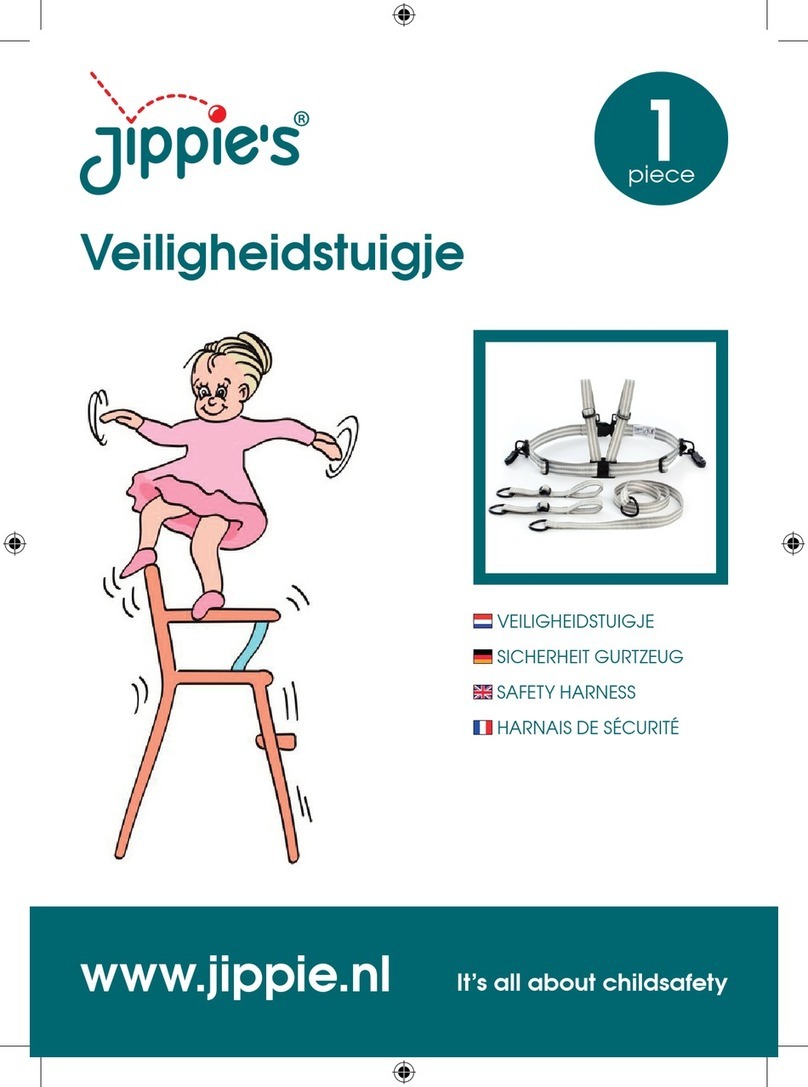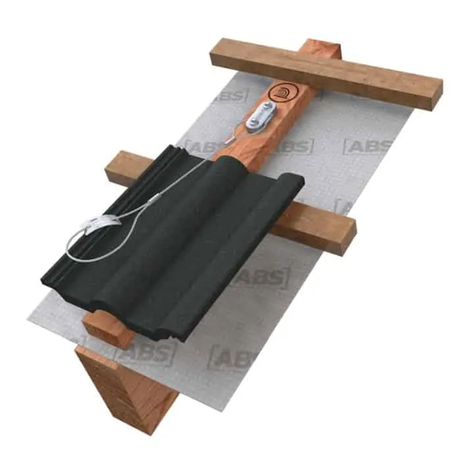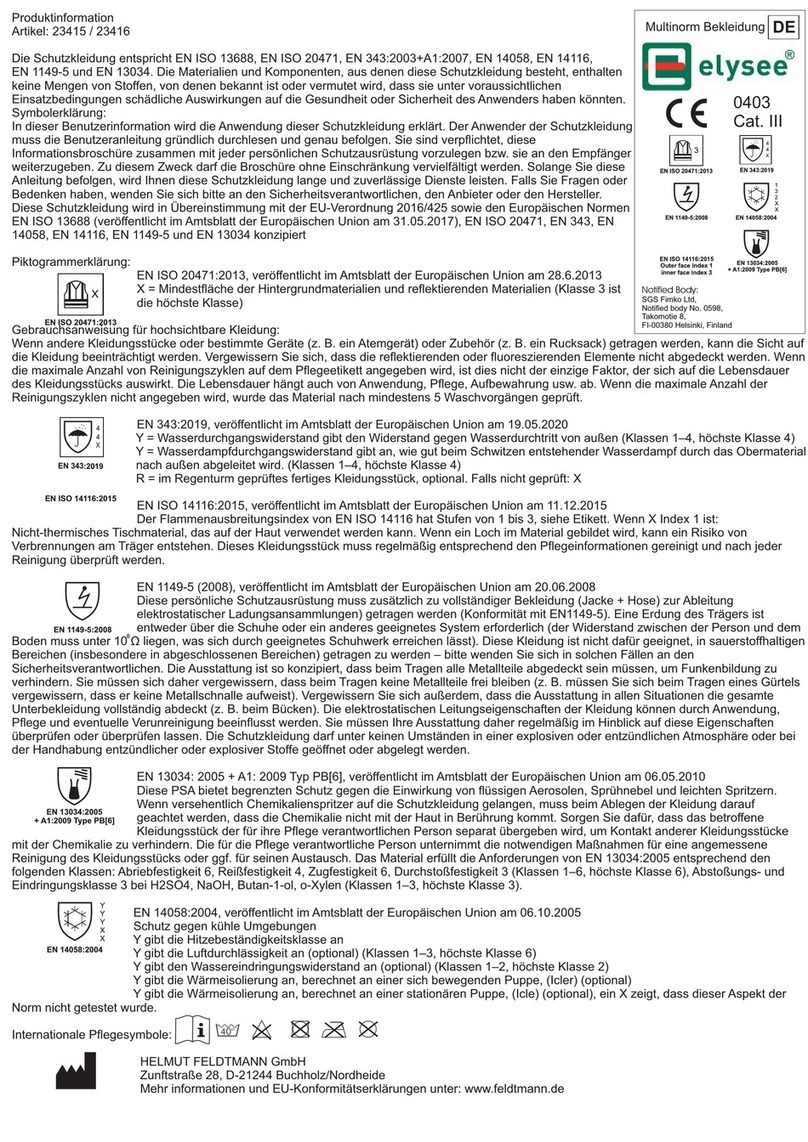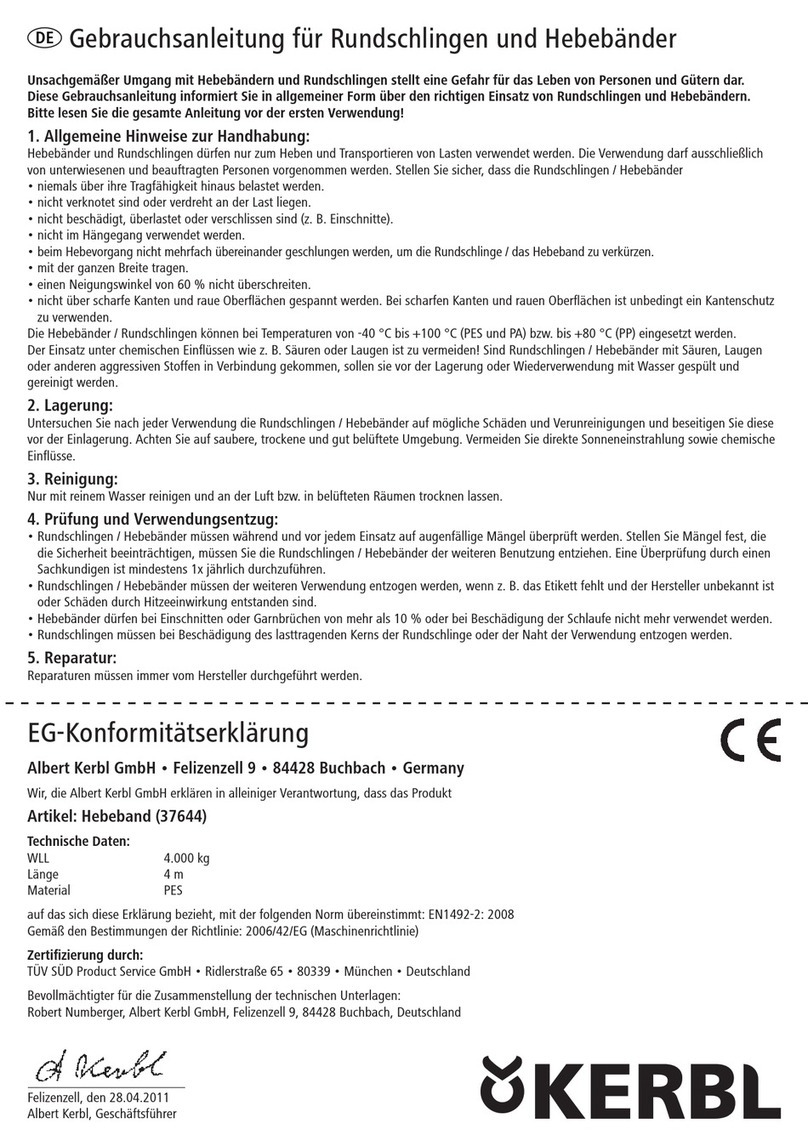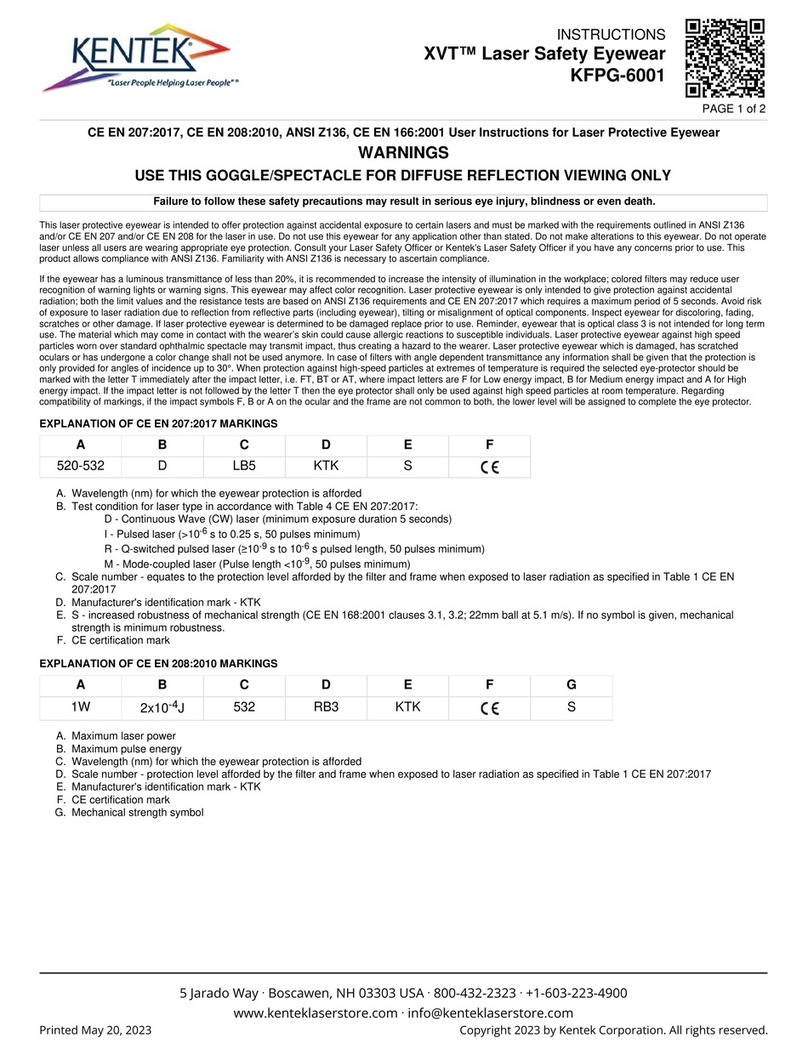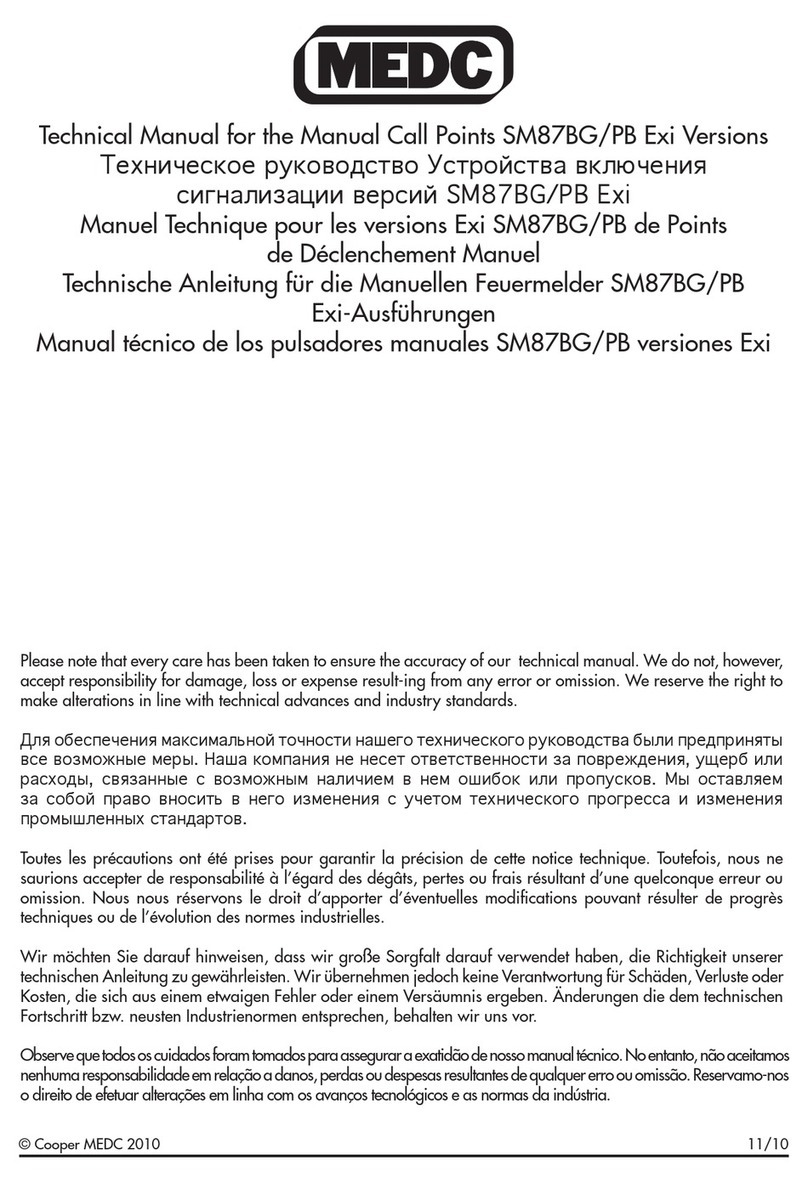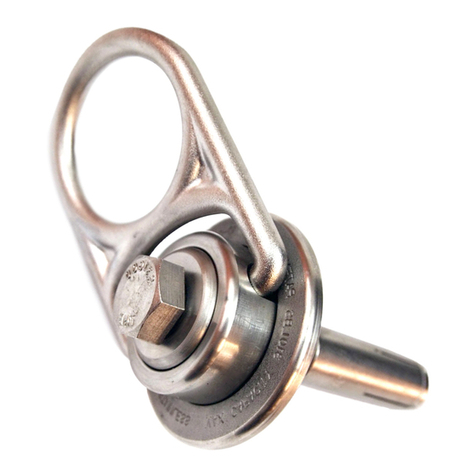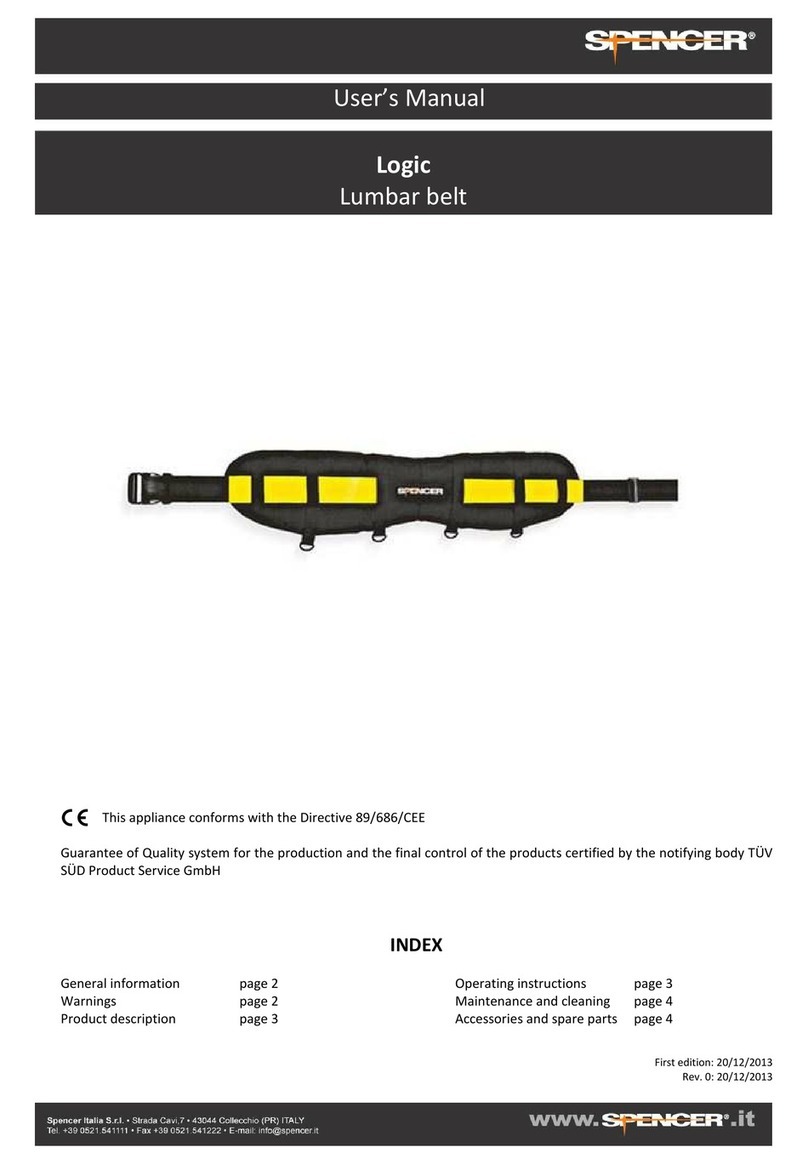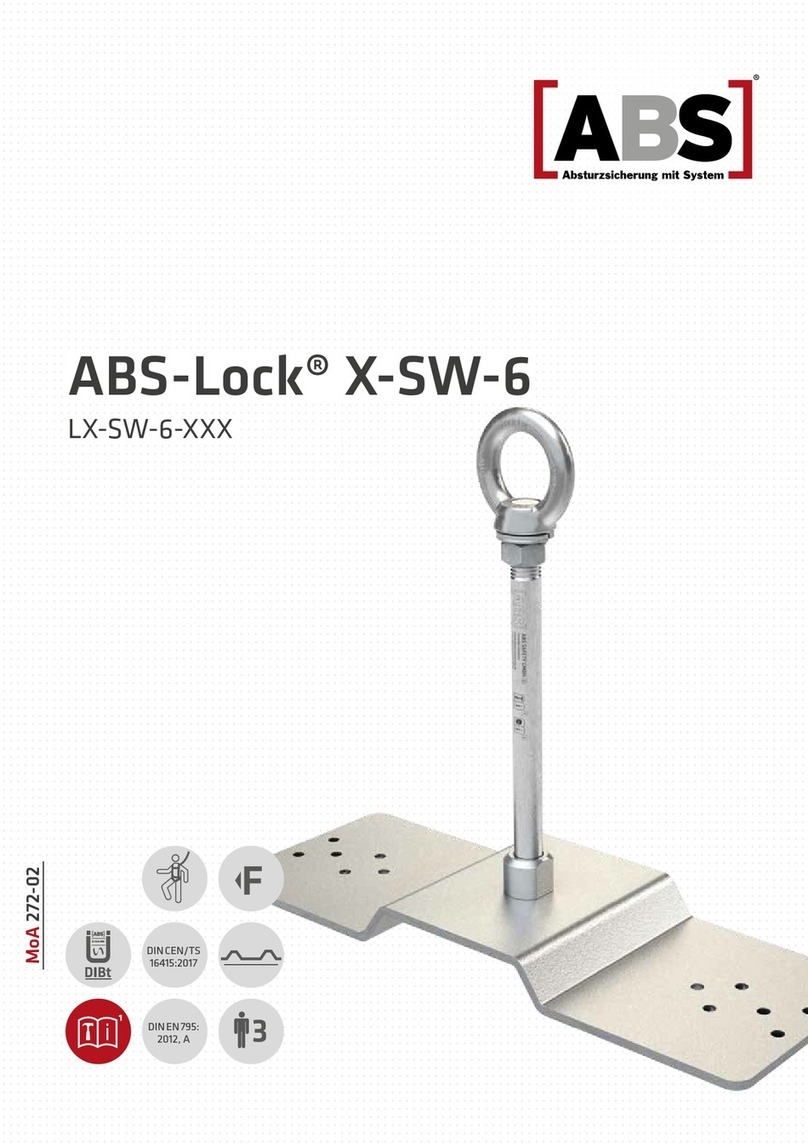Lux Tools 106 200 User manual

106200
106200
DE Sicherheitsset
IT Set di sicurezza
FR Set de sécurité
GB Safety kit
CZ Bezpečnostní sada
SK Sada bezpečnosti
PL Zestaw bezpieczeństwa
SI Varnostni set
HU Biztonsági halmaz
BA/HR
Sigurnosni set
RU Набор для безопасности
NL Veiligheidsset
Sicherheitsset_106200.book Seite 1 Freitag, 20. November 2015 9:27 09

2
123
45
67
Sicherheitsset_106200.book Seite 2 Freitag, 20. November 2015 9:27 09

3
Sicherheitsset
Bevor Sie beginnen…
Bestimmungsgemäßer Gebrauch
Die Produkte sind bestimmt als persönliche Schutz-
ausrüstung für Gehör, Augen und Atemwege. Beim
Einsatz sind die zugelassenen Einsatzbedingungen
zu beachten. Beachten Sie die weiterführenden
Angaben in den aufgeführten Vorschriften und Nor-
men.
Für gewerblichen oder industriellen Einsatz sind die
Produkte nicht geeignet.
Jede andere Verwendung ist bestimmungswidrig.
Durch bestimmungswidrige Verwendung, Verände-
rungen am Produkt oder durch den Gebrauch von
Teilen, die nicht vom Hersteller geprüft und freigege-
ben sind, können unvorhersehbare Schäden entste-
hen!
Sonstige Symbole
Symbole, die sich an Ihrem Gerät befinden, dürfen
nicht entfernt oder abgedeckt werden. Nicht mehr
lesbare Hinweise am Gerät müssen umgehend
ersetzt werden.
Zu Ihrer Sicherheit
Allgemeine Sicherheitshinweise
• Für einen sicheren Umgang mit diesem Gerät
muss der Benutzer des Gerätes diese
Gebrauchsanweisung vor der ersten Benutzung
gelesen und verstanden haben.
• Gebrauchsanweisung immer in Reichweite auf-
bewahren.
• Wenn Sie das Gerät verkaufen oder weiterge-
ben, händigen Sie unbedingt auch diese
Gebrauchsanweisung aus.
• Beachten Sie alle Sicherheitshinweise! Wenn Sie
die Sicherheitshinweise missachten, gefährden
Sie sich und andere.
• Kinder sind vom Gerät fernzuhalten. Bewahren
Sie das Gerät sicher vor Kindern und unbefugten
Personen auf.
• Umbauten, eigenmächtige Veränderungen am
Gerät sowie die Verwendung nicht zugelassener
Teile sind untersagt.
Bedienung/Arbeitsplatz
• Das Gerät darf nur benutzt werden, wenn es ein-
wandfrei in Ordnung ist. Ist das Gerät oder ein
Teil davon defekt, muss es von einer Fachkraft
instandgesetzt werden.
• Immer die gültigen nationalen und internationa-
len Sicherheits-, Gesundheits- und Arbeitsvor-
schriften beachten.
• Das Gerät darf nur in Betrieb genommen wer-
den, wenn beim Überprüfen keine Fehler gefun-
den werden. Ist ein Teil defekt, muss es unbe-
dingt vor dem nächsten Gebrauch ersetzt wer-
den.
• Kinder unter 12 Jahren sowie Benutzer, die nicht
ausreichend mit der Bedienung des Gerätes ver-
traut sind, dürfen das Gerät nicht benutzen.
• Personen, die aufgrund mangelnder physischer,
psychischer oder sensorischer Eigenschaften
nicht in der Lage sind, das Gerät sicher und
umsichtig zu bedienen, dürfen das Gerät nicht
benutzen.
• Immer mit Umsicht und nur in guter Verfassung
arbeiten: Müdigkeit, Krankheit, Alkoholgenuss,
Medikamenten- und Drogeneinfluss sind unver-
antwortlich, da Sie das Gerät nicht mehr sicher
benutzen können.
Wartung
• Es dürfen nur Wartungsarbeiten und Störungs-
beseitigungen durchgeführt werden, die hier
beschrieben sind. Alle anderen Arbeiten müssen
von einer Fachkraft durchgeführt werden.
• Nur Original-Ersatzteile verwenden. Nur diese
Ersatzteile sind für das Gerät konstruiert und
geeignet. Andere Ersatzteile führen nicht nur zu
einem Verlust der Garantie, sie können auch Sie
und Ihre Umwelt gefährden.
Gerätespezifische Hinweise
• An persönlichen Schutzausrüstungen niemals
Veränderungen, wie Bohren, Schneiden oder
Bekleben vornehmen.
• Die Produkte der persönlichen Schutzausrüs-
tung müssen stets richtig angelegt und einge-
stellt werden. Achten Sie immer auf sicheren Sitz
der Produkte.
• Sofern die Produkte gewartet werden müssen,
führen Sie die Wartung nach Herstellerangeben,
regelmäßig und sorgfältig durch.
• Beachten Sie die zugelassenen Einsatz- und
Umgebungsbedingungen.
• Beachten Sie die angegeben Lagerbedingun-
gen.
• Sollten Sie weitergehende Informationen benöti-
gen, so wenden Sie sich bitte an den Hersteller.
Gehörschutz 3001 STAR
Der Gehörschutz 3001 STAR ist ein Kapselgehör-
schützer mit höhenverstellbaren Kapseln, Absorpti-
onseinlagen und Kopfbügel (Kunststoff).
Vor Inbetriebnahme Gebrauchsanweisung
lesen.
Lagerbedingungen: relative Luftfeuchtig-
keit
Lagerbedingungen: Temperaturbereich
Verfallsdatum:
yyyy/mm = Jahr/Monat
Augenschutz
Gehörschutz/Kapselgehörschützer
Atemschutz/Feinstaubmaske
< XX%
XX °C
XX °C
DE
Sicherheitsset_106200.book Seite 3 Freitag, 20. November 2015 9:27 09

4
Benutzung
(►S.2, Punkt7)
Die Kapseln sind ergonomisch geformt, der Pfeil auf
der Kapsel muss nach oben zeigen. Setzen Sie den
Kapselgehörschützer so auf, dass die Kapseln die
Ohren komplett umschließen.
– Die Kapseln an die Ohren anlegen und durch
Verschieben so einstellen, dass der Kopfbügel
leicht auf dem Kopf aufliegt.
– Kontrollieren Sie, dass die Dichtungskissen die
Ohrmuscheln gut umschließen und dicht am
Kopf anliegen.
Hinweise zu Einsatzbedingungen
Schalldämmung
Ermittelt nach EN 13819-2:2002 Abschnitt 4.2 „Akustische Prüfverfahren“
Die Prüfung wurde durchgeführt durch die europäi-
sche notifizierte Stelle Berufsgenossenschaftliches
Institut für Arbeitssicherheit, AlteHeerstraße111,
53757St.Augustin, Kenn-Nr. 0121.
Reinigung
Der Kapselgehörschützer kann mit einem in warmer
Seifenlauge angefeuchteten Tuch gereinigt werden.
Vor erneuter Benutzung gut trocknen lassen. Ver-
wenden Sie keine kratzenden Bürsten, Schaber oder
andere Materialien, die Absorptionseinlagen oder
Dichtungskissen beschädigen könnten. Kapselge-
hörschützer nicht in Wasser tauchen. Verwenden Sie
zur Reinigung keine Chemikalien (das Produkt kann
durch bestimmte chemische Substanzen beschädigt
werden). Weitere Angaben sollten beim Hersteller
bzw. Reinigungsmittelhersteller angefordert werden.
Nur Reinigungsmittel verwenden, die für den Benut-
zer unschädlich sind.
Wartung
Kapselgehörschützer und besonders die Dichtungs-
kissen können mit dem Gebrauch verschleißen und
sollten daher häufig zum Beispiel auf Zeichen von
Brüchen und Rissen untersucht werden.
Der Kopfbügel darf nicht verbogen oder unnötig ver-
stellt werden, denn die richtige Spannkraft dieses
Elements ist ein wichtiger Faktor für die Erhaltung
der Dämmeigenschaften.
Aufbewahrung
Vor und nach dem Gebrauch ist der Kapselgehör-
schützer sauber und staubfrei aufzubewahren. Bei
Raumtemperatur in trockenen Räumen lagern (rela-
tive Luftfeuchtigkeit <90%). Beim Transport vor
Beschädigungen schützen.
Feinstaubmaske
Die Feinstaubmaske ist eine Einweg-Atemschutzge-
rät– also für den einmaligen Gebrauch bestimmt. Bei
richtiger Benutzung werden Nase und Mund abge-
deckt, so das die eingeatmete Luft (entsprechend
der angegebenen Kategorie) gefiltert wird.
Benutzung
– Setzen Sie die Feinstaubmaske auf und prüfen
Sie die Dichtigkeit, bevor Sie luftverschmutzte
Bereiche betreten (►Aufsetzen der Feinstaub-
maske– S.4).
– Tragen Sie die Feinstaubmaske solange Sie der
Luftverschmutzung ausgesetzt sind.
– Benutzen Sie die Feinstaubmaske gemäß den
entsprechenden Gesundheits- und Sicherheits-
bestimmungen.
– Entsorgen Sie die Feinstaubmaske und verwen-
den Sie eine neue, wenn
– die Feinstaubmaske während des Aufenthalts
in einem verschmutzten Raum entfernt wurde.
– die Feinstaubmaske so verschmutzt ist, dass
Sie Atemschwierigkeiten haben und/oder der
Tragekomfort schlecht ist.
– die Feinstaubmaske beschädigt ist.
– Verlassen Sie den verschmutzten Bereich umge-
hend, wenn Schwindel, Übelkeit oder andere
Beschwerden auftreten.
– Entsorgen Sie die Feinstaubmaske nach einma-
ligem Gebrauch und höchstens 8Stunden
Gebrauchsdauer (maximal ein Arbeitsgang).
Aufsetzen der Feinstaubmaske
1. Halten Sie die Feinstaubmaske so in der Hand,
dass die Bänder frei herunter hängen (►S.2,
Punkt1).
2. Halten Sie die Feinstaubmaske unter das Kinn
mit dem Nasenaufsatz nach außen (►S.2,
Punkt2).
ACHTUNG! Gefahr von Gehörschäden!
Im Lärmbereich sind Kapselgehörschützer
ständig zu tragen.
Bei unsachgemäßer Verwendung, verrin-
gert sich die Schutzwirkung des Kapselge-
hörschützers erheblich.
Die Umhüllung der Dichtungskissen mit
„Schweißabsorbern“ oder „Hygieneüber-
zügen“ kann die akustische Leistung des
Kapselgehörschützers beeinträchtigen.
ACHTUNG! Einsatzbedingungen beach-
ten! Prüfen Sie vor der Benutzung, ob der
Gehörschutz für die vorgesehenen Einsatz-
bedingungen geeignet ist. Es liegt in der
Verantwortung des Benutzers, sicherzu-
stellen, dass der Gehörschutz die notwen-
dige Schalldämmung für die Art des Einsat-
zes in dem Bereich, in dem der Gehör-
schutz angewendet werden soll, erreicht.
Frequenz (Hz) 125 250 500 1000 2000 4000 8000
Mittelwert (dB) 8,5 13,9 20,7 22,8 31,1 30,8 32,4
Standardabweichung (dB) 2,9 2,1 1,9 2,0 4,0 1,7 2,3
APV-Wert (84%) 5,6 11,8 18,8 20,8 27,1 29,1 30,1
SNR = 23dB H = 27dB M = 20dB L = 13dB
DE
Sicherheitsset_106200.book Seite 4 Freitag, 20. November 2015 9:27 09

5
3. Nehmen Sie das obere Gummiband und ziehen
es über Kopf und Nacken bis unterhalb der
Ohren. Die Feinstaubmaske mit einer Hand an
das Gesicht haltend, ziehen Sie anschließend
das untere Gummiband über den Kopf bis ober-
halb der Ohren (►S.2, Punkt3).
4. Damit die Feinstaubmaske die richtige Form
annimmt, nehmen Sie die Fingerspitzen beider
Hände und biegen die Metallverstärkung so,
dass sie sich an die Form Ihrer Nase anpasst
(►S.2, Punkt4).
Prüfung der Dichtigkeit
(►S.2, Punkt5)
– Nehmen Sie beide Hände, halten Sie sie über die
Feinstaubmaske und atmen Sie kräftig aus.
– Fühlen Sie, ob zwischen Maske und Gesicht Luft
entweicht.
– Stellen Sie die Feinstaubmaske erneut mit der
Metallverstärkung ein und/oder erhöhen Sie die
Spannung der Gummibänder.
Falls erforderlich: Erhöhen Sie die Spannung der
Gummibänder, indem Sie Knoten in das Gummiband
machen.
Diesen Vorgang wiederholen sie, bis die Maske
zufriedenstellend sitzt.
Es ist unwahrscheinlich, dass die Feinstaubmaske
einwandfrei sitzt, falls Gesichtshaare unter der Dicht-
linie am Gesicht sind.
Hinweise zu Einsatzbedingungen
• FFP1-Masken können bis zum 4-fachen des
Grenzwertes, aber nicht gegen krebserzeu-
gende und radioaktive Stoffe, Mikroorganis-
men und Enzyme eingesetzt werden.
• FFP2-Masken können bis zum 10-fachen des
Grenzwertes, mit Ausnahme von radioaktiven
Stoffen, Viren und Enzymen eingesetzt werden.
• FFP3-Masken sind bis zum 30-fachen des
Grenzwertes einsetzbar.
Reinigung
Die Feinstaubmaske darf nicht gereinigt oder mehr-
mals benutzt werden.
Aufbewahrung
Unbenutzte Feinstaubmasken
Bewahren Sie unbenutzte Feinstaubmasken in
einem geschlossenen Behältnis auf und lagern Sie
diese trocken in nicht verschmutzten Räumen (rela-
tive Luftfeuchtigkeit <70%) zwischen
+5und+55°C. Beim Transport vor Beschädigungen
schützen.
Benutzte Feinstaubmasken
Die Feinstaubmaske ist ausschließlich für den ein-
maligen Gebrauch bestimmt. Nach Gebrauch muss
die Feinstaubmaske entsorgt werden.
Augenschutzgerät
Das Augenschutzgerät schützt Ihre Augen vor dem
Eindringen von Fremdkörpern entsprechend der
angegebenen Kategorie.
Benutzung
(►S.2, Punkt6)
Sie erhalten das Augenschutzgerät fertig montiert.
Einstellmöglichkeiten am Kopfband benutzen um
einen festen Sitz zu gewährleisten.
Hinweise zu Einsatzbedingungen
Verwendungsbereich Tragkörper
• Stoß mit niedriger Energie (nach EN 166:2001)
Verwendungsbereich Sichtscheibe
• Stoß mit niedriger Energie (nach EN 166:2001)
ACHTUNG! Einsatzbedingungen beach-
ten! Einweg-Atemschutzgeräte sind ent-
sprechend einer der Kategorien FFP1,
FFP2 und FFP3 klassifiziert. Prüfen Sie vor
der Benutzung die Kategorie zu der das
Atemschutzgerät gehört; dieses ist auf der
Verpackung und dem Atemschutzgerät
angegeben. Es liegt in der Verantwortung
des Benutzers, sicherzustellen, dass das
Atemschutzgerät die notwendige Schutz-
stufe für die Art und Konzentration der Ver-
schmutzung in dem Bereich, in dem das
Atemschutzgerät angewendet werden soll,
erreicht.
GEFAHR! Lebensgefahr! Feinstaubmas-
ken versorgen nicht mit Sauerstoff!
Feinstaubmasken nicht benutzen:
• Bei Feuerwehreinsätzen
• In sauerstoffarmen Bereichen wie zum
Beispiel Tanks oder anderen schlecht
belüfteten Bereichen– Sauerstoffge-
halt geringer als 17% (UK19%)
• In explosiver Atmosphäre
• In Bereichen, in denen die Verschmut-
zung oder ihre Konzentration unbe-
kannt oder lebensbedrohlich ist
ACHTUNG! Einsatzbedingungen beach-
ten! Prüfen Sie vor der Benutzung, ob das
Augenschutzgerät für die vorgesehenen
Einsatzbedingungen geeignet ist. Es liegt in
der Verantwortung des Benutzers, sicher-
zustellen, dass das Augenschutzgerät den
notwendigen Schutz für die Art des Einsat-
zes in dem Bereich, in dem der Augen-
schutz angewendet werden soll, erreicht.
Hinweis: Falls Schutz gegen Teilchen
hoher Geschwindigkeit bei extremen Tem-
peraturen erforderlich ist, sollte das Augen-
schutzgerät mit dem Buchstaben „T“ direkt
nach dem Buchstaben für die Aufprallinten-
sität gekennzeichnet sein, d.h. FT, BT,
oder AT.
Wenn dem Buchstaben für die Aufprallin-
tensität nicht der Buchstabe „T“ folgt, darf
das Augenschutzgerät nur bei Raumtem-
peratur gegen Teilchen hoher Geschwin-
digkeit verwendet werden.
DE
Sicherheitsset_106200.book Seite 5 Freitag, 20. November 2015 9:27 09

6
Reinigung
Reinigen Sie das Augenschutzgerät lediglich mit für
optische Linsen vorgesehenen Reinigungstüchern
oder Flüssigkeiten, allenfalls mit warmen Wasser und
einer milden Seife. Nehmen Sie zum Trocknen nur
sehr weiche, fett- und fusselfreie Tücher.
Desinfektion
Zur Desinfektion der Augenschutzgeräte fragen Sie
bitte im Einzelfall bei LUX nach.
Aufbewahrung
Bei Raumtemperatur in trockenen Räumen lagern
(relative Luftfeuchtigkeit <90%). Beim Transport vor
Beschädigungen schützen. Die Lagerung in der Bril-
lenbox schützt optimal vor Verschmutzung und
anderen Einflüssen.
Entsorgung
Gerät entsorgen
Informieren Sie sich bitte bei Ihrer Kommune über die
Möglichkeiten der geregelten Entsorgung.
Mit der getrennten Entsorgung führen Sie die Altge-
räte dem Recycling oder anderen Formen der Wie-
derverwertung zu. Sie helfen damit zu vermeiden,
dass u.U. belastende Stoffe in die Umwelt gelangen.
Verpackung entsorgen
Die Verpackung besteht aus Karton und entspre-
chend gekennzeichneten Folien, die recycelt werden
können.
– Führen Sie diese Materialien der Wiederverwer-
tung zu.
Störungen und Hilfe
Technische Daten
GEFAHR! Verletzungsgefahr! •Werk-
stoffe, die in Kontakt mit der Haut des
Trägers kommen, können bei empfind-
lichen Personen allergische Reaktionen
hervorrufen.
• Bei verkratzter oder beschädigter
Sichtscheibe oder einem beschädigten
Tragekörper ist das gesamte Augen-
schutzgerät auszutauschen.
• Augenschutzgeräte gegen Teilchen
hoher Geschwindigkeit können durch
das Übertragen von Stößen für den
Träger eine Gefährdung darstellen,
wenn sie über üblichen Korrektionsbril-
len getragen werden.
GEFAHR! Gefahr für Leib und Leben!
Unsachgemäße Reparaturen können dazu
führen, dass Ihr Gerät nicht mehr sicher
funktioniert. Sie gefährden damit sich und
Ihre Umgebung.
Modell Gehörschutz 3001STAR Feinstaubmaske Augenschutzgerät
Artikelnummer 106200
Klassifizierung 3001 R 7010, FFP1 4303PC
Norm EN352-1:2002 EN149:2001 EN166:2001
Gewicht 190g 11g 60g
DE
Sicherheitsset_106200.book Seite 6 Freitag, 20. November 2015 9:27 09

7
Set di sicurezza
Prima di iniziare…
Utilizzo in conformità con le disposizioni
I prodotti sono previsti come dispositivi di protezione
individuale per le orecchio, gli occhi e le vie respira-
torie. Prestare attenzione ad un utilizzo conforme alle
disposizioni. Si prega di prestare attenzione alle indi-
cazioni che verranno fornite nelle norme e nelle leggi
presentate.
I prodotto non sono adatti ad usi commerciali ed
industriali.
Ogni altro utilizzo é contrario alla destinazione d’uso.
Dalla destinazione di uso contraria, dalle modifiche
del prodotto o dall’uso di parti, che non sono collau-
date e rilasciate dal produttore, possono emergere
danni imprevedibili!
Altri simboli
Non si possono rimuovere o coprire i simboli che si
trovano sul vostro apparecchio. Le indicazioni non
più leggibili sull’apparecchio devono essere imme-
diatamente sostituite.
Per la vostra sicurezza
Indicazioni generali di sicurezza
• Per un utilizzo in sicurezza di questa apparec-
chiatura, l’utente deve aver letto e capito queste
istruzioni per l’uso prima di far funzionare il pro-
dotto per la prima volta.
• Tenere sempre le istruzioni per l’uso a portata di
mano.
• Qualora il prodotto venisse venduto o ceduto ad
altri, bisogna consegnare in ogni caso anche
queste istruzioni per l’uso.
• Osservare tutte le precauzioni di sicurezza! Se si
ignorano le precauzioni di sicurezza si metterà in
pericolo se stessi e gli altri.
• Il prodotto va tenuto al di fuori della portata dei
bambini. Conservare il prodotto al sicuro dai
bambini e dalle persone non autorizzate.
• Le trasformazioni e le modifiche di propria inizia-
tiva del prodotto nonché l’utilizzo di componenti
non omologate sono vietati.
Uso/posto di lavoro
• L’apparecchiatura deve essere utilizzata solo se
é adeguatamente in ordine. Se l’apparecchio o
una sua parte sono guasti deve intervenire una
persona specializzata.
• Attenersi sempre alle norme di sicurezza, sanita-
rie e di lavoro nazionali e internazionali.
• L’apparecchio può essere utilizzato soltanto se
non vengono riscontrati guasti. Se un pezzo è
guasto deve assolutamente essere sostituito
prima dell’uso successivo.
• I minori di 12 anni e gli utenti che non hanno suf-
ficiente dimestichezza con l’uso dell’apparec-
chio, non possono utilizzarlo.
• Le persone che per motivi fisici, psichici o sen-
soriali non sono in grado di utilizzare l’apparec-
chio in modo sicuro e prudente, non possono
utilizzarlo.
• Lavorare sempre con cautela e solo in buone
condizioni di salute: La fatica, la malattia, il con-
sumo di alcolici, l’effetto di medicinali e di stupe-
facenti rendono irresponsabili, perché non si é
più in grado di usare con sicurezza il dispositivo.
Manutenzione
• Si possono effettuare soltanto gli interventi di
manutenzione e le risoluzioni dei guasti descritti
in questo manuale. Tutti gli altri lavori devono
essere effettuati da personale qualificato.
• Utilizzare soltanto ricambi originali. Soltanto
questi ricambi sono concepiti e adatti per questo
apparecchio. Gli altri ricambi non soltanto invali-
deranno la garanzia, ma possono mettere in
pericolo voi e ciò che vi circonda.
Indicazioni specifiche per l’apparecchio
• Non modificare mai i dispositivo di protezione
individuale effettuando dei fori, tagli o incollaggi.
• I dispositivi di protezione individuale devono
sempre essere indossati ed utilizzati corretta-
mente. Prestare sempre attenzione ad un sicuro
posizionamento del prodotto.
• Se i prodotti necessitano di una manutenzione,
esse deve essere effettuata in conformità con le
indicazioni del produttore in maniera regolare ed
accurata.
• Prestare attenzione alle condizioni di uso e
dell’ambiente circostante.
• Prestare attenzione alle condizioni di stoccaggio
indicate.
• Se sono necessarie ulteriori informazioni si
prega di rivolgersi al relativo produttore.
Dispositivo di protezione uditiva 3001
STAR
Il dispositivo di protezione uditiva 3001 STAR è una
cuffia di protezione con capsule regolabili in altezza,
con inserti fonoassorbenti e cerchietto (in plastica).
Prima della messa in esercizio leggere le
istruzioni per l’uso.
Condizioni di stoccaggio: umidità relativa
Condizioni di stoccaggio: Intervallo di tem-
peratura
Data di scadenza:
aaaa/mm = anno/mese
Protezione oculare
Protezione uditiva– cuffie per le orecchie
Protezione per le vie respiratorie/masche-
ra per polveri sottili
< XX%
XX °C
XX °C
IT
Sicherheitsset_106200.book Seite 7 Freitag, 20. November 2015 9:27 09

8
Utilizzo
(►P.2, punto7)
Le cuffie sono ergonomiche, la freccia raffigurata
sulla cuffia deve essere rivolta verso l’alto. Posizio-
nare le cuffie in modo tale da coprire interamente le
orecchie.
– Posizionare e regolare le cuffie in modo tale che
il cerchietto poggi leggermente sulla testa.
– Controllare che i cuscinetti isolante coprano
interamente le orecchie e che siano ben saldi
appoggiati ad esse.
Indicazioni per le condizioni di utilizzo
Isolamento acustico
Garantito in conformità con EN 13819-2:2002, par. 4.2 „verifica acustica“
La verifica è stata effettuata da un ente europeo desi-
gnato, ossia dall’istituto delle associazioni lavorative
per la sicurezza sul lavoro, AlteHeerstraße111,
53757St.Augustin, targhetta num. 0121.
Pulizia
Le cuffie possono essere pulite con una soluzione
saponosa tiepida e con un panno umido. Prima di
riutilizzare le cuffie bisogna farle asciugare comple-
tamente. Non utilizzare delle spazzole abrasive,
raschietti o altri materiali che possono danneggiare i
componenti fonoassorbenti o i cuscinetti insonoriz-
zanti. Non immergere le cuffie nell’acqua. Per la puli-
zia non bisogna utilizzare delle sostanza chimiche (il
prodotto può essere danneggiato da alcune di esse).
E’ possibile richiedere ulteriori informazioni al pro-
duttore del dispositivo o al produttore del deter-
gente. Usare solo detergenti non dannosi per
l’utente.
Manutenzione
Le cuffie, e soprattutto i cuscinetti isolanti, possono
usurarsi e quindi bisogna sempre controllare che non
ci siano segni evidenti di usura o di rottura.
Il cerchietto non deve essere piegato e non deve
subire inutili sollecitazioni meccaniche, poiché la
corretta tensione è un elemento molto importante
per garantire le corrette proprietà isolanti.
Conservazione
Prima e dopo l’uso, il dispositivo di protezione udi-
tiva deve essere conservato in un ambiente pulito e
privo di polvere. Conservare a temperatura ambiente
in un luogo asciutto (umidità relativa al <90%).
Durante il trasporto proteggere l’apparecchio da
eventuali danni.
Maschera per polveri sottili
La maschera per polveri sottili è un dispositivo di
protezione delle vie respiratorie- quindi è monouso.
Per un corretto utilizzo della maschera bisogna
coprire il naso e la bocca in modo tale che l’aria
respirata (in base alla categoria indicata) venga fil-
trata correttamente.
Utilizzo
– Indossare la maschera per polveri sottili e verifi-
catene la tenuta, prima di entrare in ambienti con
aria contaminata (►Indossare la maschera per
polveri sottili– p.8).
– Indossare la maschera per polveri sottili, finché
siete esposti ad aria contaminata.
– Utilizzare la maschera per polveri sottili in con-
formità con le norme sanitarie e di sicurezza.
– Smaltire correttamente la maschera per polveri
sottili ed utilizzarne una nuova quando
– vi siete tolti la maschera in un ambiente con
aria contaminata.
– La maschera è talmente sporca che vi impedi-
sce di respirare correttamente e/o è oramai
difficile da indossare.
– La maschera è danneggiata.
– Abbandonare subito l’area contaminata se si
presentano capogiri, nausea o altri sintomi simili.
– Cambiare la maschera dopo ogni utilizzo e dopo
un utilizzo continuativo di un massimo di 8ore (al
massimo un ciclo di lavoro).
Indossare la maschera per polveri sottili
1. Tenere la maschera nella mano facendo pendere
liberamente i cordoncini verso il basso (►P.2,
punto1).
2. Tenere la maschera per polveri sottili sotto il
mento con la parte per il naso verso l’esterno
(►P.2, punto2).
3. Afferrare il cordoncino in gomma e tirarlo fino
alla nuca e fin sotto le orecchie. Tenere la
maschera per polveri sottili saldamente al volto e
passare il cordoncino in gomma sulla testa e
sopra le orecchie (►P.2, punto3).
4. Per far assumere alla maschera la corretta forma
del vostro volto, bisogna piegare i rinforzi in
metallo per modellarla alla forma del vostro naso
(►P.2, punto4).
AVVISO! Pericolo di danni all’udito! In
zone rumorose, le cuffie devono essere
indossate continuamente.
In caso di utilizzo non conforme alle dispo-
sizioni, l’effetto protettivo delle cuffie dimi-
nuisce sensibilmente.
Il rivestimento delle cuffie "assorbi sudore"
o "igienici" possono compromettere le pre-
stazioni acustiche delle cuffie protettive.
AVVISO! Tenere conto delle condizioni di
utilizzo! Prima dell’utilizzo, controllare se
tale protezione uditiva è effettivamente
adatta all’uso previsto per essa. E’ respon-
sabilità dell’utente assicurarsi che la prote-
zione uditiva raggiunga il livello di prote-
zione adeguato al tipo di utilizzo e
all’ambiente di lavoro.
Frequenza (Hz) 125 250 500 1000 2000 4000 8000
Valore medio (dB) 8,5 13,9 20,7 22,8 31,1 30,8 32,4
Deviazione standard (dB) 2,9 2,1 1,9 2,0 4,0 1,7 2,3
Valore APV (84%) 5,6 11,8 18,8 20,8 27,1 29,1 30,1
SNR = 23dB H = 27dB M = 20dB L = 13dB
IT
Sicherheitsset_106200.book Seite 8 Freitag, 20. November 2015 9:27 09

9
Controllo della tenuta
(►P.2, punto5)
– Prendere la maschera fra le mani, tenerla salda-
mente e respirare energicamente.
– Se sentite che fra la maschera e il vostro volto
scorre dell’aria.
– Allora regolate meglio la forma dei rinforzi metal-
lici e/o aumentate la tensione dei cordoncini in
gomma.
Se necessario: Aumentate la tensione dei cordoncini
in gomma, facendo dei nodi nei cordoncini stessi.
Ripetere questo procedimento finché non viene rag-
giunta una tensione soddisfacente.
E’ improbabile che la maschera aderisca perfetta-
mente se rimangono impigliati dei capelli fra il vostro
volto e il contorno della maschera stessa.
Indicazioni per le condizioni di utilizzo
• Le maschere FFP1 possono essere usate fino al
quadruplo del loro valore limite ma non in pre-
senza di sostanze, microrganismi ed enzimi
cancerogeni o radioattivi.
• Le maschere FFP2 possono essere usate fino
dieci volte il loro valore limite ad eccezione di di
sostanze, virus ed enzimi radioattivi.
• Le maschere FFP3 possono essere usate fino a
30 volte il loro valore limite.
Pulizia
La maschera per polveri sottili non deve essere pulita
e non deve essere utilizzata più di una volta.
Conservazione
Maschere per polveri sottili non utilizzate
Conservare le maschere non utilizzate in un reci-
piente chiuso e immagazzinarlo in un luogo pulito e
asciutto (umidità relativa al <70%) con una tempe-
ratura fra +5e+55°C. Durante il trasporto evitare
danni al prodotto.
Maschere per polveri sottili già utilizzate
La maschera per polveri sottili è esclusivamente
monouso. Subito dopo l’uso essa deve essere smal-
tita correttamente.
Dispositivo di protezione oculare
Il dispositivo di protezione oculare protegge gli
occhi, evitando l’ingresso di corpi esterni, in confor-
mità con la categoria indicata.
Utilizzo
(►P.2, punto6)
L’utente ha un dispositivo di protezione oculare già
montato. Utilizzare le opzioni di regolazione del cor-
doncino, per garantire una posizione stabile del
dispositivo stesso.
Indicazioni per le condizioni di utilizzo
Are di utilizzo corpo portante
• Impatto con energia di basso livello (in confor-
mità con EN 166:2001)
Area di utilizzo visiera
• Impatto con energia di basso livello (in confor-
mità con EN 166:2001)
AVVISO! Tenere conto delle condizioni di
utilizzo! I dispositivi di protezione per le vie
respiratorio sono classificati in conformità
con una delle categorie FFP1, FFP2 e
FFP3. Prima dell’utilizzo, verificare a quale
categoria appartiene il dispositivo di prote-
zione delle vie respiratorie. Essa è indicata
sull’imballaggio del dispositivo stesso. E’
responsabilità dell’utente assicurarsi che il
dispositivo raggiunga un livello di prote-
zione adeguato al tipo di utilizzo e
all’ambiente di lavoro.
PERICOLO! Pericolo di vita! Le maschere
per polveri sottili non erogano ossigeno!
Non usare le maschere per polveri sottili:
• Durante incendi
• In ambienti poveri di ossigeno, come
container o altre aree poco ventilate–
con tasso di ossigeno sotto il 17%
(UK19%)
• In ambienti esplosivi
• In aree con concentrazioni di inquina-
mento sconosciuto, che potrebbe
essere dannosa per la vita dell’utente.
AVVISO! Tenere conto delle condizioni di
utilizzo! Prima dell’utilizzo, controllare se
tale protezione oculare è effettivamente
adatta all’uso previsto per essa. E’ respon-
sabilità dell’utente assicurarsi che la il
dispositivo di protezione oculare raggiunga
il livello di protezione adeguato al tipo di uti-
lizzo e all’ambiente di lavoro.
Nota: Nel caso in cui sia necessaria una
protezione contro piccoli oggetti ad alte
temperature, il dispositivo di protezione
oculare deve essere contrassegnato col
carattere „T“ per indicarne l’intensità
d’urto, ossiaFT, BT, o AT.
Se al carattere per l’intensità d’urto non
segue il carattere "T", il dispositivo di prote-
zione oculare può essere utilizzato sono in
ambienti con particelle movimentate ad alta
velocità.
PERICOLO! Rischio di lesioni! •Le
sostanza a contatto con la pelle del
soggetto interessato possono portare
a delle reazioni allergiche, se esso è
ipersensibile.
• Se la visiera e graffiata o danneggiata o
se il corpo portante del dispositivo è
danneggiato, bisogna sostituire l’intero
dispositivo.
• I dispositivi di protezione oculare adatti
a particelle movimentate ad alta velo-
cità si possono danneggiare a causa di
fori impatti e possono rappresentare un
pericolo per l’utente se essi vengono
indossati sopra i classici occhiali da
vista.
IT
Sicherheitsset_106200.book Seite 9 Freitag, 20. November 2015 9:27 09

10
Pulizia
Pulire il dispositivo di protezione oculare con un
panno per lenti ottiche o con detergenti appositi, o in
ogni caso con acqua e un sapone non aggressivo.
Per asciugarlo bisogna utilizzare un panno morbido
e senza pelucchi.
Disinfezione
Per la disinfezione del dispositivo di protezione ocu-
lare si prega di rivolgersi alla LUX, facendo riferi-
mento al singolo caso.
Conservazione
Conservare a temperatura ambiente in un luogo
asciutto (umidità relativa al <90%). Durante il tra-
sporto proteggere l’apparecchio da eventuali danni.
La conservazione nell’apposito box per occhiali pro-
tegge al meglio dalla sporcizia e da altri elementi.
Smaltimento
Smaltimento dell’apparecchio
Si prega di informarsi presso il proprio comune
riguardo allo smaltimento.
Con lo smaltimento separato gli apparecchi usati
vengono destinati al riciclaggio o ad altre forme di
riutilizzo. In questo modo si contribuisce ad impedire
che ades. eventuali sostanze dannose finiscano
nell’ambiente.
Smaltimento dell’imballaggio
L’imballaggio è costituito da cartone e da pellicole
con il contrassegno corrispondente, che ne indica il
riciclaggio.
– Provvedete al riutilizzo di questi materiali.
Guasti ed Assistenza
Dati Tecnici
PERICOLO! Pericolo di vita! Le ripara-
zioni inadeguate posso causare un incerto
funzionamento dell’apparecchiatura. Con
ciò si mette a repentaglio la propria vita e
quella dell’ambiente circostante.
Modello Dispositivo di protezione
uditiva 3001STAR Maschera per polveri sottili Dispositivo di protezione
oculare
Codice articolo 106200
Classificazione 3001 R 7010, FFP1 4303PC
Norma EN352-1:2002 EN149:2001 EN166:2001
Peso 190g 11g 60g
IT
Sicherheitsset_106200.book Seite 10 Freitag, 20. November 2015 9:27 09

11
Set de sécurité
Avant de commencer…
Usage conforme
Les produits sont prévus pour un équipement de
protection personnel pour l’ouïe, les yeux et les voies
respiratoires. Lors de leur utilisation, les conditions
d’intervention autorisées doivent être respectées.
Veillez à respecter les mentions complémentaires
dans les directives et normes indiquées.
Les produits ne sont pas appropriés à une exploita-
tion commerciale ou industrielle.
Toute autre utilisation n’est pas conforme aux finali-
tés. Des dommages imprévisibles peuvent se pro-
duire suite à une utilisation non conforme, des modi-
fications sur le produit ou l’utilisation de pièces qui
n’ont pas été contrôlées ou validées par le fabricant!
Pictogrammes divers
Il est strictement interdit de retirer ou de recouvrir les
pictogrammes apposés sur l’appareil. Les indica-
tions apposées sur l’appareil qui ne sont plus lisibles
doivent être remplacées dans les meilleurs délais.
Pour votre sécurité
Consignes de sécurité générales
• Afin de garantir une manipulation sûre de l’appa-
reil, l’utilisateur doit avoir lu et compris ce
manuel d’utilisation avant la première utilisation.
• Toujours conserver le manuel d’utilisation à por-
tée de main.
• Si vous vendez ou remettez l’appareil à un tiers,
veuillez impérativement également y joindre le
présent manuel d’utilisation.
• Respectez toutes les consignes de sécurité! Si
vous ne respectez pas les consignes de sécu-
rité, vous vous exposez au danger et mettez la
vie d’autres personnes en péril.
• Tenir l’appareil hors de portée des enfants.
Conservez l’appareil dans un lieu sûr hors de
portée des enfants et des personnes non autori-
sées.
• Il est strictement interdit de transformer et de
procéder à des modifications personnelles sur
l’appareil. L’utilisation de pièces non homolo-
guées est également interdite.
Utilisation/Poste de travail
• L’appareil peut uniquement être utilisé lorsqu’il
est en parfait état. Si l’appareil ou une partie de
l’appareil est défectueuse, la réparation doit
alors être réalisée par un professionnel.
• Veillez toujours à respecter les directives de tra-
vail, de sécurité et sanitaires nationales et inter-
nationales en vigueur.
• Il est strictement interdit de mettre l’appareil en
service si une défectuosité a été détectée lors de
la vérification. Si une pièce est défectueuse, elle
doit impérativement être remplacée avant l’utili-
sation suivante.
• Il est strictement interdit aux enfants qui n’ont
pas atteint l’âge de 12 ans ainsi qu’aux utilisa-
teurs non suffisamment familiarisés avec la com-
mande de l’appareil d’utiliser ce dernier.
• Les personnes qui, en raison de l’absence de
propriétés physiques, psychiques ou senso-
rielles, ne sont pas en mesure de manipuler
l’appareil avec sécurité et circonspection, ne
doivent pas utiliser l’appareil.
• Travaillez toujours avec précaution et unique-
ment lorsque vous êtes en bonne santé: travail-
ler par fatigue, maladie, sous l’emprise de
l’alcool, l’influence de drogues et de médica-
ments sont des comportements irresponsables
étant donné que vous ne pouvez pas utiliser
l’appareil avec sécurité.
Maintenance
• Seuls les travaux de maintenance et les élimina-
tions de pannes ici décrits peuvent être réalisés.
Tous les autres travaux sont strictement réser-
vés à un professionnel.
• Utilisez uniquement des pièces de rechange
d’origine. Seules ces pièces de rechange sont
construites et appropriées pour l’appareil. L’uti-
lisation d’autres pièces de rechange conduit non
seulement à une perte de la garantie, mais vous
pouvez également mettre votre environnement
en péril et vous exposez vous-même à des dan-
gers.
Remarques spécifiques à l’appareil
• Ne procédez jamais à des modifications sur les
équipements de protection personnels (alésage,
découpage ou collage).
• Les produits de l’équipement de protection per-
sonnel doivent toujours impérativement être cor-
rectement positionnés et réglés. Veillez toujours
à une installation sûre des produits.
• Si les produits doivent être entretenus, réalisez
la maintenance régulièrement et consciencieu-
sement selon les mentions fournies par le fabri-
cant.
• Veillez à respecter les conditions d’intervention
et d’environnement autorisées.
• Veillez à respecter les conditions de stockage
mentionnées.
• Si vous avez besoin d’informations complémen-
taires, veuillez vous adresser au fabricant.
Lisez le manuel d’utilisation avant la mise
en service de l’appareil.
Conditions de stockage: humidité relative
de l’air
Conditions de stockage: plage de tempé-
rature
Date de péremption:
aaaa/mm = année/mois
Protection oculaire
Protection pour les oreilles/serre-tête
Protection respiratoire/masque antipous-
sières fines
< XX%
XX °C
XX °C
FR
Sicherheitsset_106200.book Seite 11 Freitag, 20. November 2015 9:27 09

12
Protection pour les oreilles 3001 STAR
La protection pour les oreilles 3001 STAR est un
serre-tête avec des capsules réglables en hauteur,
des coussins absorbants et un cintrage (matière
plastique).
Utilisation
(►P.2, point7)
Les capsules sont de forme ergonomique, la flèche
sur la capsule doit pointer vers le haut. Positionnez le
serre-tête de protection de telle manière sur la tête
que les capsules englobent intégralement les
oreilles.
– Installez les capsules sur les oreilles et les déca-
ler de telle manière que le cintrage soit légère-
ment posé sur la tête.
– Contrôlez que les coussins d’étanchéité
englobent bien le lobe des oreilles et soient bien
collés sur la tête.
Remarques relatives aux conditions
d’intervention
Insonorisation
Déterminée selon la norme EN 13819-2:2002 section 4.2 "Procédure de contrôle acoustique"
Le contrôle a été réalisé par le bureau européen
enregistré pour la sécurité du travail "Berufsgenos-
senschaftliches Institut für Arbeitssicherheit",
AlteHeerstraße111 à 53757SanktAugustin (Alle-
magne), Code 0121.
Nettoyage
Le serre-tête de protection peut être nettoyé avec un
chiffon humidifié dans de l’eau savonneuse chaude.
Laissez bien sécher avant de l’utiliser de nouveau.
N’utilisez pas de brosses grattantes, de grattoirs ou
d’autres matériaux qui pourraient endommager les
coussins d’absorption ou d’étanchéité. Ne plongez
pas le serre-tête de protection dans l’eau. Pour le
nettoyage, n’utilisez pas de produits chimiques (le
produit risque d’être endommagé par certaines
substances chimiques). Demandez si nécessaire des
informations complémentaires auprès du fabricant
ou du fabricant des produits de nettoyage. Utilisez
uniquement des produits de nettoyage qui ne sont
pas nocifs pour l’utilisateur.
Maintenance
Les serre-tête de protection et en particulier les
coussins d’étanchéité peuvent s’user suite à leur uti-
lisation. Il est pour cette raison conseillé d’examiner
fréquemment le produit en vue d’éventuels cassures
et fissures.
Le cintrage du serre-tête ne doit pas être plié ou
réglé excessivement étant donné que la force de ten-
sion adéquate de cet élément est un facteur impor-
tant pour le respect des propriétés insonorisantes.
Stockage
Avant et après l’utilisation, le serre-tête de protection
doit être conservé à l’abri de la poussière et dans un
état de parfaite propreté. Stockez dans des locaux
secs à température ambiante (humidité relative de
l’air <90%). Lors du transport, protégez des dom-
mages.
Masque antipoussières fines
Le masque antipoussières fines est un appareil de
protection respiratoire jetable- donc destiné à une
utilisation unique. Lorsqu’il est correctement utilisé,
le nez et la bouche sont recouverts ce qui permet de
filtrer l’air inspiré (selon la catégorie indiquée).
Utilisation
– Enfilez le masque antipoussières fines et contrô-
lez l’étanchéité avant de pénétrer dans des péri-
mètres où l’air est pollué (►Positionnement du
masque antipoussières fines– p.13).
– Portez le masque antipoussières fines tant que
vous êtes exposé à la pollution de l’air.
– Utilisez le masque antipoussières fines en
conformité avec les dispositions de sécurité et
sanitaires correspondantes.
– Jetez le masque antipoussières fines et utilisez-
en un nouveau lorsque
– le masque antipoussières fines a été retiré
pendant le séjour dans un local pollué.
– le masque antipoussières fines est tellement
encrassé que vous avez des difficultés à res-
pirer et/ou que le confort de port du masque
est mauvais.
AVIS! Risque de nuisance auditive!
Dans un périmètre soumis au bruit, le serre-
tête doit être porté en permanence.
En cas d’utilisation non conforme, l’effet de
protection du serre-tête est nettement
réduit.
L’enveloppe des coussins d’étanchéité
avec les "absorbeurs de transpiration" ou
les "housses hygiéniques" peut entraver la
performance acoustique du serre-tête.
AVIS! Veillez à respecter les conditions
d’intervention! Avant l’utilisation, contrô-
lez si la protection pour les oreilles est
appropriée pour les conditions d’interven-
tion prévues. Il incombe à l’utilisateur de
garantir que la protection pour les oreilles
atteigne l’insonorisation nécessaire pour le
type d’intervention dans le domaine dans
lequel la protection pour les oreilles est
destinée à être utilisée.
Fréquence (Hz) 125 250 500 1000 2000 4000 8000
Valeur moyenne (dB) 8,5 13,9 20,7 22,8 31,1 30,8 32,4
Écart standard (dB) 2,9 2,1 1,9 2,0 4,0 1,7 2,3
Valeur APV (84%) 5,6 11,8 18,8 20,8 27,1 29,1 30,1
SNR = 23dB H = 27dB M = 20dB L = 13dB
FR
Sicherheitsset_106200.book Seite 12 Freitag, 20. November 2015 9:27 09

13
– le masque antipoussières fines est endom-
magé.
– Quittez immédiatement le périmètre pollué si
vous avez des vertiges, des nausées ou d’autres
douleurs.
– Jetez le masque antipoussières fines après son
utilisation et suite à une utilisation maximale de
8heures (une session de travail maximum).
Positionnement du masque antipoussières
fines
1. Maintenez le masque antipoussières fines dans
la main de telle manière que les bandes pendent
dans le vide (►P.2, point1).
2. Maintenez le masque antipoussières fines sous
le menton avec la partie du nez tournée vers
l’extérieur (►P.2, point2).
3. Prenez la bande caoutchoutée supérieure et
passez-la au-dessus de la tête et de la nuque et
tirez-la jusque sous les oreilles. Maintenez le
masque antipoussières fines avec une main sur
le visage et tirez ensuite la bande caoutchoutée
inférieure au-dessus de la tête jusqu’au dessus
des oreilles (►P.2, point3).
4. Afin que le masque antipoussières fines prenne
la bonne forme, saisissez avec les pointes des
doigts des deux mains le renforcement métal-
lique et courbez-le afin qu’il s’adapte à la forme
du nez (►P.2, point4).
Contrôle d’étanchéité
(►P.2, point5)
– Posez les deux mains sur le masque antipous-
sières fines et inspirez profondément.
– Contrôlez si de l’air passe entre le masque et le
visage.
– Réglez de nouveau le masque antipoussières
fines avec le renforcement métallique et/ou aug-
mentez la tension des bandes caoutchoutées.
Si nécessaire: augmentez la tension des bandes
caoutchoutées en faisant des noeuds dans cette
dernière.
Répétez cette procédure jusqu’à ce que le masque
soit installé de manière satisfaisante.
Il est peu probable que le masque antipoussières
fines soit correctement positionné lors de la pré-
sence de poils sur le visage au niveau de la ligne
d’étanchéité.
Remarques relatives aux conditions
d’intervention
• Les masques FFP1 peuvent être utilisés jusqu’à
une valeur 4 fois plus importante que la valeur
seuil, mais pas contre des substances cancé-
rigènes et radioactives, des microorga-
nismes et des enzymes.
• Les masques FFP2 peuvent être utilisés jusqu’à
une valeur 10 fois supérieure à la valeur seuil,
exception faite des substances radioactives, des
virus et des enzymes.
• Les masques FFP3 peuvent être utilisés jusqu’à
une valeur 30 fois supérieure.
Nettoyage
Il est interdit de nettoyer ou d’utiliser plusieurs fois le
masque antipoussières fines.
Stockage
Masques antipoussières fines inutilisés
Conservez les masques antipoussières fines non uti-
lisés dans un récipient fermé et stockez ces derniers
au sec dans des locaux propres (humidité relative de
l’air <70%) entre +5et+55°C. Lors du transport,
protégez les masques contre d’éventuels endomma-
gements.
Masques antipoussières fines usagés
Le masque antipoussières fines est conçu pour une
utilisation unique. Après utilisation, le masque anti-
poussières fines doit être jeté.
Appareil de protection oculaire
L’appareil de protection oculaire protège vos yeux
de la pénétration de corps étrangers selon la catégo-
rie indiquée.
Utilisation
(►P.2, point6)
L’appareil de protection oculaire est livré entière-
ment monté. Utilisez les possibilités de réglage au
niveau de la bande de la tête pour garantir un bon
positionnement.
AVIS! Veillez à respecter les conditions
d’intervention! Les appareils de protec-
tion respiratoire jetables sont classifiés
selon une des catégories FFP1, FFP2 et
FFP3. Avant utilisation, vérifiez la catégorie
à laquelle correspond l’appareil de protec-
tion respiratoire; cette dernière est indi-
quée sur l’emballage et sur l’appareil de
protection respiratoire. Il incombe à l’utili-
sateur de garantir que l’appareil de protec-
tion respiratoire atteigne le niveau de pro-
tection nécessaire pour le type et la
concentration de la pollution dans le
domaine dans lequel l’appareil de protec-
tion respiratoire est destiné à être utilisé.
DANGER! Danger de mort! Des
masques antipoussières fines n’alimentent
pas en oxygène!
N’utilisez pas les masques antipoussières
fines:
• dans le cadre d’interventions de
sapeurs-pompiers
• dans des périmètres pauvres en oxy-
gène comme par exemple des réser-
voirs ou d’autres périmètres mal
aérés- teneur en oxygène inférieure à
17% (UK19%)
• dans une atmosphère explosive
• dans des domaines dans lesquels la
pollution ou sa concentration ne sont
pas connues ou présentent un danger
de mort
FR
Sicherheitsset_106200.book Seite 13 Freitag, 20. November 2015 9:27 09

14
Remarques relatives aux conditions
d’intervention
Domaine d’utilisation partie portante
• Choc avec faible énergie (selon EN 166:2001)
Domaine d’utilisation vitre
• Choc avec faible énergie (selon EN 166:2001)
Nettoyage
Nettoyez l’appareil de protection oculaire simple-
ment avec des lingettes de nettoyage ou des liquides
prévus pour les lentilles optiques, au plus à l’eau
chaude et avec un savon doux. Pour le sécher, utili-
sez uniquement des chiffons très doux, exempts de
graisses et de peluches.
Désinfection
Pour la désinfection des appareils, veuillez deman-
der conseil au cas par cas à LUX.
Stockage
Stockez dans des locaux secs à température
ambiante (humidité relative de l’air <90%). Lors du
transport, protégez des dommages. Le stockage
dans la boîte à lunettes protège l’appareil de manière
optimale des encrassements et d’autres influences.
Mise au rebut
Mise au rebut de l’appareil
Informez-vous auprès de votre commune des possi-
bilités de mise au rebut réglementées.
Avec l’élimination séparée, vous remettez les appa-
reils usagés à un centre de recyclage ou à d’autres
formes de retraitement. Vous aidez ainsi à éviter que
des matièrespolluantes soient éventuellement
déposées dans l’environnement.
Élimination de l’emballage
L’emballage est composé de carton et de feuilles
portant des indications correspondantes et qui
peuvent être recyclées.
– Déposez ces matériaux aux endroits appropriés
afin qu’ils soient recyclés.
Pannes et solutions
Caractéristiques techniques
AVIS! Veillez à respecter les conditions
d’intervention! Avant l’utilisation, contrô-
lez si l’appareil de protection oculaire est
approprié pour les conditions d’interven-
tion prévues. Il incombe à l’utilisateur de
garantir que l’appareil de protection occu-
laire atteigne la protection nécessaire pour
le type d’intervention dans le domaine dans
lequel la protection oculaire est destinée à
être utilisée.
Remarque: si une protection contre des
particules à vitesse élevée dans le cas de
températures extrêmes est nécessaire, il
est recommandé d’apposer une mention
sur l’appareil de protection oculaire avec la
lettre "T", directement après la lettre dési-
gnant l’intensité du choc, c’est-à-dire FT,
BT ou AT.
Si la lettre pour l’intensité du choc ne figure
pas après la lettre "T", l’appareil de protec-
tion oculaire peut uniquement être utilisé à
température ambiante contre des parti-
cules à vitesse élevée.
DANGER! Risque de blessure! •Des
matières entrant en contact avec la
peau de la personne peuvent causer
des réactions allergiques pour les per-
sonnes sensibles.
• Lorsque la vitre est rayée ou endom-
magée ou dans le cas d’une partie por-
tante endommagée, l’ensemble de
l’appareil de protection oculaire doit
être remplacé.
• Les appareils de protection oculaire
contre les particules à vitesse élevée
peuvent représenter un risque en rai-
son de la transmission des chocs pour
la partie portante lorsqu’ils sont portés
sur des lunettes de correction ordi-
naires.
DANGER! Risque corporel et danger de
mort! Des réparations non conformes
peuvent conduire à un fonctionnement non
sécurisé de votre appareil. Vous mettez
votre environnement en péril et vous expo-
sez vous-même au danger.
Modèle Protection pour les oreilles
3001STAR Masque antipoussières
fines Appareil de protection ocu-
laire
Numéro d’article 106200
Classification 3001 R 7010, FFP1 4303PC
Norme EN352-1:2002 EN149:2001 EN166:2001
Poids 190g 11g 60g
FR
Sicherheitsset_106200.book Seite 14 Freitag, 20. November 2015 9:27 09

15
Safety kit
Before you begin…
Proper use
The products are intended as protection for ears,
eyes and airways. The approved conditions for use
must be observed during application. Please
observe the further information in the listed regula-
tions and standards.
This products are not suitable for commercial or
industrial use.
Any other use is improper. Unforeseeable damage
may result from improper use, alterations to the
product or the use of parts that have not been
checked and approved by the manufacturer!
Other symbols
Symbols which are on your device may not be
removed or covered. Notes on the device which are
no longer legible must be replaced immediately.
For your safety
General safety instructions
• For safe handling of the device, the user must
have read and understood the operating instruc-
tions before first use.
• Always keep instructions for use within reach.
• If you sell the device or pass it along to someone
else, be sure to also include these instructions
for use.
• Heed all safety instructions! If you do not
observe the safety instructions you will endanger
yourself and others.
• Keep the device away from children. Store the
device in a place where it is safe from children
and unauthorized persons.
• Conversions, independent modifications and the
use of non-approved parts are not permitted.
Operation/workplace
• The device must only be used if it is in perfect
condition. If the device or part of the device is
defective, have it repaired by an expert.
• Always heed the valid national and international
safety, health and labour codes.
• The device must only be put into operation if no
faults are found during the check-up. If a part is
defective, it must absolutely be replaced before
the next use.
• Children under 12 years of age and users who
are not sufficiently acquainted with its operation,
must not use the device.
• Persons unable to safely and carefully use the
device due to physical, psychological and neural
reasons must not use the device.
• Always use with care and when you are in good
physical condition: Working under the effects of
fatigue, illness, alcohol, medication and drugs is
irresponsible, as you are no longer able to safely
use the device.
Maintenance
• Only such maintenance work and fault elimina-
tion described here may be carried out. All other
work must be done by an expert.
• Only use original spare parts. Only these spare
parts are designed and suitable for the device.
The use of other spare parts not only voids the
warranty, you can also endanger yourself and
your environment.
Device-specific notes
• Never make any changes to protective equip-
ment such as drilling, cutting or gluing.
• The personal protective equipment must always
be put on and adjusted correctly. Always make
sure that the products fit correctly.
• If the products require maintenance, carry out
the work regularly and with care, according to
the manufacturer’s instructions.
• Please observe the approved application and
environmental conditions.
• Please observe the stated storage conditions.
• If you require further information, please contact
the manufacturer.
Ear protection 3001 STAR
The ear protection 3001 STAR is a pair of ear muffs
with height-adjustable muffs, absorption inserts and
headband (plastic).
Use
(►P.2, item7)
The muffs are ergonomically shaped– the arrow on
the muff must point upwards. Put on the ear muffs so
that the muffs completely cover the ears.
– Place the muffs on your ears and adjust them so
that the headband just touches your head.
– Check whether the sealing pads fit tightly around
your ears and close to your head.
Read operating instructions before com-
missioning.
Storage conditions: relative humidity
Storage conditions: Temperature range
Expiration date:
yyyy/mm = year/month
Eye protection
Ear protection/ear muffs
Respiratory protection/fine dust mask
< XX%
XX °C
XX °C
NOTICE! Danger of damage to the hear-
ing! Ear muffs must be worn in the noise
area at all times.
The protective effect of the ear muffs is
substantially reduced if used improperly.
The sheathing of the sealing pads with
"sweat absorbers" or "hygienic covers" can
impair the acoustic performance of the ear
muffs.
GB
Sicherheitsset_106200.book Seite 15 Freitag, 20. November 2015 9:27 09

16
Information on conditions for use Sound insulation
Determined acc. to EN 13819-2:2002 section 4.2 "Acoustic test methods"
The test was carried out by the European notified
body Berufsgenossenschaftliches Institut für Arbe-
itssicherheit, AlteHeerstraße111, 53757St.Augus-
tin, ID-no. 0121.
Cleaning
The ear muffs can be cleaned using a cloth and warm
soapy water. Leave to dry well before using again.
Do not use any scratching brushes, scrapers or other
materials which could damage the absorption inserts
or sealing pads. Do not immerse the ear muffs in
water. Do not use chemicals for cleaning (the prod-
uct may be damaged by certain chemical sub-
stances). Please ask the manufacturer or the manu-
facturer of the cleaning agents if you require further
information. Only use cleaning agents that are not
harmful for the user.
Maintenance
Ear muffs and particularly the sealing pads may wear
with use and should therefore be regularly checked
for breakage and cracks.
The headband must not be bent or unnecessarily
mis-adjusted, because the correct tension of this
element is an important factor for maintaining the
insulating properties.
Storage
The ear muffs must be kept dry and free from dust
before and after use. Store at room temperature in a
dry place (relative humidity <90%). Protect from
damage during transport.
Fine dust mask
The fine dust mask is a disposable respiratory appa-
ratus– intended for one-time use only. When used
correctly, the mouth and nose are covered, so that
the breathed-in air (acc. to the stated category) is fil-
tered.
Use
– Put on the fine dust mask and check for tight-
ness before entering contaminated areas
(►Putting on the fine dust mask– p.16).
– Wear the fine dust mask as long as you are
exposed to contaminated air.
– Use the fine dust mask acc. to the respective
health and safety regulations.
– Dispose of the fine dust mask and use a new
one, if
– the fine dust mask has been removed during
exposure in a contaminated area.
– the fine dust mask is so soiled that you have
difficulty breathing and/or wearing comfort
deteriorates.
– the fine dust mask is damaged.
– Leave the contaminated area immediately if diz-
ziness, nausea or other complaints should arise.
– Dispose of the fine dust mask after use and at
the most after 8hours of use (max. one working
cycle).
Putting on the fine dust mask
1. Hold the fine dust mask in your hand so that the
ties hang down freely (►P.2, item1).
2. Hold the fine dust mask underneath the chin with
the nosepiece facing outwards (►P.2, item2).
3. Take the top rubber tie and pull it over the head
and neck to underneath the ears. Holding the
fine dust mask to your face with one hand, pull
the lower rubber tie over your head to above the
ears (►P.2, item3).
4. So that the fine dust mask adopts the right
shape, bend the metal reinforcement with the
fingertips of both hands until it adapts to the
shape of your nose (►P.2, item4).
Testing for tightness
(►P.2, item5)
– Take both hands, hold them over the fine dust
mask and breathe out heavily.
– Feel whether air is escaping between the mask
and your face.
– Re-adjust the fine dust mask with the metal rein-
forcement and/or increase the tension of the
rubber ties.
If necessary: Increase the tension of the rubber ties
by tying a knot into them.
Repeat this process until the mask fits properly.
It is improbable that the fine dust mask fits perfectly
if facial hair is underneath the sealing line.
NOTICE! Observe the conditions for
use! Before use, check whether the ear
protection is suitable for the intended appli-
cation conditions. The user is responsible
for making sure that the ear protection
reaches the necessary sound insulation for
the type of application in the area in which
the ear protection is to be used.
Frequency (Hz) 125 250 500 1000 2000 4000 8000
Average value (dB) 8.5 13.9 20.7 22.8 31.1 30.8 32.4
Standard deviation (dB) 2.9 2.1 1.9 2.0 4.0 1.7 2.3
APV value (84%) 5.6 11.8 18.8 20.8 27.1 29.1 30.1
SNR = 23dB H = 27dB M = 20dB L = 13dB
GB
Sicherheitsset_106200.book Seite 16 Freitag, 20. November 2015 9:27 09

17
Information on conditions for use
• FFP1 masks can be used up to 4 times the limit
value, but not for use against carcinogenic
and radioactive substances, micro-organ-
isms and enzymes.
• FFP2 masks can be used up to ten times the limit
value, with the exception of radioactive sub-
stances, viruses and enzymes.
• FFP3 masks can be used up to 30 times the limit
value,.
Cleaning
The fine dust mask must not be cleaned or used sev-
eral times.
Storage
Unused fine dust masks
Keep unused masks in a closed container and store
them ina dry and non-contaminated area (relative
humidity <70%) between +5and+55°C. Protect
against damage during transport.
Used fine dust masks
The fine dust mask is intended for one-time use only.
The fine dust mask must be disposed of after use.
Eye protection apparatus
The eye protection apparatus protects your eyes
from foreign objects acc. to the stated category.
Use
(►P.2, item6)
You will receive the eye protection apparatus in
assembled condition. Make use of the adjustment
options on the headband to ensure a close fit.
Information on conditions for use
Application area support element
• Low energy impact (acc. to EN 166:2001)
Application area viewing lens
• Low energy impact (acc. to EN 166:2001)
Cleaning
Only clean the eye protection apparatus with clean-
ing cloths or fluids intended for optical lenses, or with
warm water and a mild detergent. To dry, only use
very soft, grease-free and lint-free cloths.
Disinfection
Please contact LUX for information on the disinfec-
tion of the individual eye protection apparatuses.
Storage
Store at room temperature in a dry place (relative
humidity <90%). Protect from damage during
transport. Storage in the goggle box provides opti-
mal protection against soiling and other influences.
Disposal
Disposing of the device
Please ask your local authorities for information on
the disposal options available.
Separate disposal ensures that the used devices are
submitted for recycling of other forms of re-use. This
helps to prevent harmful substancesfrom entering
the environment.
NOTICE! Observe the conditions for
use! Disposable respiratory apparatuses
are classified according to one of the cate-
gories FFP1, FFP2 and FFP3. Before use,
check which class the respiratory appara-
tus belongs to– it is stated on the packag-
ing and on the apparatus. The user is
responsible for making sure that the respir-
atory protection reaches the necessary
safety level for the type and concentration
of contamination in the area in which the
respiratory protection is to be used.
DANGER! Mortal danger! Fine dust
masks do not supply oxygen!
Do not use fine dust masks:
• for fire brigade operations
• in low-oxygen areas such as tanks or
other badly ventilated areas– oxygen
content less than 17% (UK19%)
• in explosive atmospheres
• in areas where the degree of contami-
nation or its concentration is unknown
or life-threatening
NOTICE! Observe the conditions for
use! Before use, check whether the eye
protection apparatus is suitable for the
intended application conditions. The user is
responsible for making sure that the eye
protection apparatus reaches the neces-
sary protection for the type of application in
the area in which the eye protection is to be
used.
Note: In case protection against high-
speed particles at extreme temperatures is
necessary, the eye protection apparatus
should be marked with the letter "T"directly
after the letter for impact intensity, i.e. FT,
BT, or AT.
If the letter "T" does not follow the letter for
impact intensity, the eye protection appara-
tus must only be used at room temperature
against high speed particles.
DANGER! Risk of injury! •Materials com-
ing into direct contact with the skin can
bring forth allergic reactions in sensi-
tive persons.
• If the viewing lens is scratched or dam-
aged, or if the support element is dam-
aged, the entire eye protection appara-
tus must be replaced.
• Eye protection apparatuses against
high speed particles can represent a
danger for the support element by
transmission of impacts, if they are
worn over conventional glasses.
GB
Sicherheitsset_106200.book Seite 17 Freitag, 20. November 2015 9:27 09

18
Disposing of packaging
The packaging consists of cardboard and corre-
spondingly marked films, which can be recycled.
– Submit these materials to a recycling facility.
Faults and remedial measures
Technical data
DANGER! Danger to life and limb!
Improperly performed repairs can lead to
the device not functioning safely. This
endangers yourself and your environment.
Model Ear protection 3001STAR Fine dust mask Eye protection apparatus
Item number 106200
Classification 3001 R 7010, FFP1 4303PC
Standard EN352-1:2002 EN149:2001 EN166:2001
Weight 190g 11g 60g
GB
Sicherheitsset_106200.book Seite 18 Freitag, 20. November 2015 9:27 09

19
Bezpečnostní sada
Než začnete…
Používání v souladu s určením
Výrobky jsou určeny jako osobní pomůcky pro
ochranu sluchu, oči a dýchacích cest. Při použití je
nutno dbát schválených podmínek používání. Dodr-
žuje další údaje v uvedených předpisech a normách.
Výrobky nejsou vhodné pro komerční nebo průmys-
lové použití.
Každé jiné použití není v souladu s určením. Jiným
než stanoveným použitím, změnami na výrobku
nebo použitím součástí, které nebyly testovány a
schváleny výrobcem, mohou vzniknout nepředvída-
telné škody!
Jiné symboly
Symboly, které se nacházejí na Vašem přístroji, se
nesmějí odstraňovat ani zakrývat. Upozornění na pří-
stroji, která už nejsou čitelná, musí být neprodleně
nahrazena novými.
Pro Vaši bezpečnost
Všeobecné bezpečnostní pokyny
• Pro bezpečné zacházení s tímto přístrojem si
musí uživatel před prvním použitím přístroje pře-
číst tento návod k použití a musí mu rozumět.
• Návod k použití uchovávejte tak, aby byl vždy po
ruce.
• Pokud přístroj prodáváte nebo předáváte další
osobě, předejte vždy i tento návod k použití.
• Respektujte všechna bezpečnostní upozornění a
pokyny! Nedbáte-li bezpečnostních pokynů,
ohrožujete sebe i jiné.
• Děti udržujte mimo dosah stroje. Ukládejte pří-
stroj tak, aby byl zajištěný před dětmi a nepovo-
lanými osobami.
• Zakázány jsou přestavby, svévolné změny na
přístroji, stejně jako použití neschválených dílů.
Obsluha/pracovní místo
• Přístroj se smí používat, jen když je v bezvadném
stavu. Jsou-li na přístroji nebo na některé jeho
součásti závady, musí jej opravit odborník.
• Vždy dodržujte platné národní a mezinárodní
předpisy o bezpečnosti práce a ochraně zdraví.
• Přístroj se smí uvést do provozu pouze tehdy,
když při kontrole nebyly zjištěny žádné závady.
Je-li některá součást vadná, je nutno ji před dal-
ším použitím bezpodmínečně vyměnit.
• Přístroj nesmějí používat děti do 12 let, stejně
jako osoby, které nejsou dostatečně seznámeny
s obsluhou přístroje.
• Přístroj nesmějí používat osoby, které z důvodu
snížených fyzických či duševních schopností,
případně smyslových poruch nejsou schopny
stroj bezpečně a obezřetně obsluhovat.
• Pracujte vždy obezřetně a jen když se cítíte
dobře: Práce při únavě, nemoci, po požití alko-
holu, pod vlivem léků nebo drog je nezodpo-
vědný hazard, protože pak nemůžete přístroj
bezpečně ovládat.
Údržba
• Smíte provádět jen ty údržbářské práce a
odstraňovat jen ty závady, které jsou zde
popsány. Veškeré další práce musí provádět
výhradně odborník.
• Používejte pouze originální náhradní díly. Pouze
tyto náhradní díly jsou konstruovány pro přístroj,
a jsou pro něj vhodné. Jiné náhradní díly vedou
nejen ke ztrátě záruky; můžete také ohrozit sebe
nebo své okolí.
Pokyny specifické pro daný přístroj
• Na osobních ochranných pomůckách nikdy
neprovádějte změny jako je vrtání, řezání nebo
slepování.
• Osobní ochranné pomůcky musí být vždy
správně oblečeny a musí být dobře nastaveny.
Vždy dbejte na to, aby Vám výrobek bezpečně
padnul.
• Pokud musí být na výrobcích prováděna údržba,
provádějte ji pravidelně a pečlivě podle údajů
výrobce.
• Dodržujte schválené podmínky pro používání a
okolní podmínky.
• Dodržujte uvedené podmínky skladování.
• Pokud byste potřebovali další informace,
obraťte se prosím na výrobce.
Ochrana sluchu 3001 STAR
Ochrana sluchu 3001 STAR je mušlový chránič slu-
chu s výškově nastavitelnými mušlemi, absorpčními
vložkami a hlavovým obloukem (umělá hmota).
Použití
(►S.2, bod7)
Před uvedením do provozu si přečtěte ná-
vod k použití.
Podmínky skladování: relativní vlhkost
vzduchu
Podmínky skladování: rozmezí teplot
Datum skončení trvanlivosti:
yyyy/mm = rok/měsíc
Ochrana očí
Ochrana sluchu/mušlové chrániče sluchu
Ochrana dýchacích cest/respirátor proti
jemnému prachu
< XX%
XX °C
XX °C
OZNÁMENÍ! Nebezpečí poškození slu-
chu! V hlučném prostředí je nutno mušlový
chránič sluchu nosit stále.
Při nesprávném použití se značně snižuje
ochranný účinek mušlového chrániče slu-
chu.
Akustický výkon mušlového chrániče slu-
chu může negativně ovlivnit obalení těsni-
cích polštářků „potními usazeninami“ nebo
„nehygienickým povlakem“.
CZ
Sicherheitsset_106200.book Seite 19 Freitag, 20. November 2015 9:27 09

20
Mušle jsou ergonomicky tvarované, šipka na mušli
musí ukazovat směrem nahoru. Nasaďte si mušlový
chránič sluchu tak, aby mušle zcela obklopily uši.
– Přiložte mušle na uši a posunutím nastavte hla-
vový oblouk tak, aby lehce přiléhal k hlavě.
– Zkontrolujte, zda těsnicí polštářky dobře obklo-
pují ušní boltec a těsně přiléhají k hlavě.
Upozornění na podmínky použití
Tlumení hluku
Vypočítáno podle EN 13819-2:2002 oddíl 4.2 „Akustické zkušební metody“
Testování provedlo evropské notifikované místo pro-
fesního sdružení– Institut für Arbeitssicherheit (insti-
tut pro bezpečnost práce), AlteHeerstraße111,
53757St.Augustin, ident.č. 0121.
Čištění
Mušlový chránič sluchu lze čistit hadrem namoče-
ným v teplém mýdlovém roztoku. Před dalším použi-
tím jej nechte dobře vyschnout. Nepoužívejte žádné
kartáče, škrabky nebo jiné materiály, které by mohly
poškodit absorpční vložky nebo těsnicí polštářky.
Neponořujte mušlové chrániče sluchu do vody. K
čištění nepoužívejte žádné chemikálie (výrobek by se
mohl určitými chemickými látkami poškodit). Další
údaje si vyžádejte u výrobce resp. výrobce čisticích
prostředků. Používejte jen takové čisticí prostředky,
které nejsou škodlivé pro uživatele.
Údržba
Mušlové chrániče sluchu a zejména těsnicí polštářky
se mohou používáním opotřebovat a proto je nutno
je často kontrolovat, zda například nevykazují
známky prasklin nebo trhlin.
Hlavový oblouk se nesmí pokřivit nebo zbytečně
nastavovat, protože správná upínací síla tohoto
prvku je důležitý faktor pro zachování tlumicích vlast-
ností.
Uložení
Mušlový chránič sluchu je nutno před použitím i po
něm uchovávat v čistém a bezprašném prostředí.
Skladujte při pokojové teplotě v suchých prostorách
(relativní vlhkost vzduchu <90%). Při přepravě
chraňte před poškozením.
Respirátor proti jemnému prachu
Respirátor proti jemnému prachu je jednorázový pro-
středek ochrany dýchacích cest- je tedy určený pro
jednorázové použití. Při správném použití je zakrytý
nos a ústa, takže je vdechovaný vzduch filtrovaný
(podle uvedené kategorie).
Použití
– Respirátor proti jemnému prachu si nasaďte
dříve než vstoupíte do prostoru se znečištěným
vzduchem, a vyzkoušejte jeho těsnost (►Nasa-
zení respirátoru proti jemnému prachu– s.20).
– Respirátor proti jemnému prachu mějte nasa-
zený po celou dobu přítomnosti ve znečištěné
oblasti.
– Používejte respirátor proti jemnému prachu
podle příslušných zdravotních a bezpečnostních
ustanovení.
– Respirátor proti jemnému prachu zlikvidujte a
použijte nový v těchto případech:
– Respirátor proti jemnému prachu byl během
pobytu ve znečištěném prostoru sejmutý.
– Respirátor proti jemnému prachu je tak zne-
čištěný, že máte dýchací obtíže a/nebo použití
není komfortní.
– Respirátor proti jemnému prachu je poško-
zený.
– Ihned opusťte znečištěný prostor, pokud se
dostaví závrať, nevolnost nebo jiné potíže.
– Respirátor proti jemnému prachu zlikvidujte po
jednorázovém použití a nejpozději po 8hodi-
nách používání (maximálně jedna pracovní
směna).
Nasazení respirátoru proti jemnému prachu
1. Respirátor proti jemnému prachu držte v ruce
tak, aby pásky volně visely dolů (►S.2, bod1).
2. Uchopte respirátor proti jemnému prachu pod
bradou tak, aby byl nosní nástavec směrem ven
(►S.2, bod2).
3. Vezměte horní gumový pásek a táhněte jen přes
hlavu a šíji až pod uši. Potom táhněte spodní
gumový pásek přes hlavu až pod uši, respirátor
proti jemnému prachu přitom jednou rukou při-
držujte na obličeji (►S.2, bod3).
4. Aby respirátor proti jemnému prachu získal
správný tvar, špičkami prstů obou rukou ohněte
kovové výztuhy tak, aby se přizpůsobily tvaru
Vašeho nosu (►S.2, bod4).
Kontrola těsnosti
(►S.2, bod5)
– Přiložte obě ruce přes respirátor proti jemnému
prachu a silně vydechněte.
– Budete cítit, zda mezi respirátorem a obličejem
uniká vzduch.
OZNÁMENÍ! Dodržujte podmínky pou-
žití! Před použitím zkontrolujte, zda je
ochrana sluchu vhodná pro dané podmínky
použití. Uživatel musí odpovědně určit, zda
v oblasti, ve které má být ochrana sluchu
použitá, poskytne při daném způsobu pou-
žití nutné tlumení hluku.
kmitočet (Hz) 125 250 500 1000 2000 4000 8000
střední hodnota (dB) 8,5 13,9 20,7 22,8 31,1 30,8 32,4
standardní odchylka (dB) 2,9 2,1 1,9 2,0 4,0 1,7 2,3
APV (upravená současná hodnota)
(84%) 5,6 11,8 18,8 20,8 27,1 29,1 30,1
SNR = 23dB H = 27dB M = 20dB L = 13dB
CZ
Sicherheitsset_106200.book Seite 20 Freitag, 20. November 2015 9:27 09
Table of contents
Languages:
